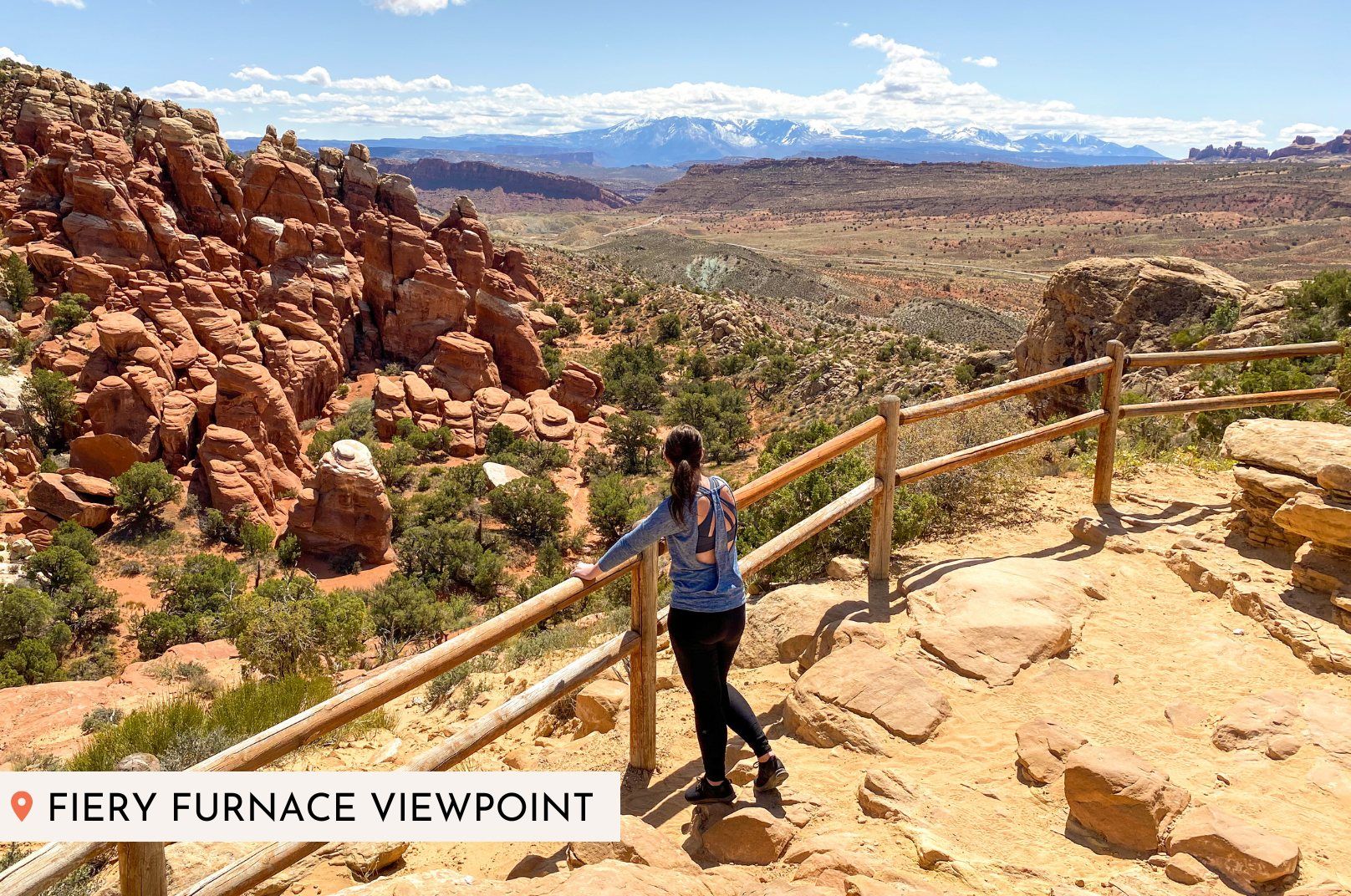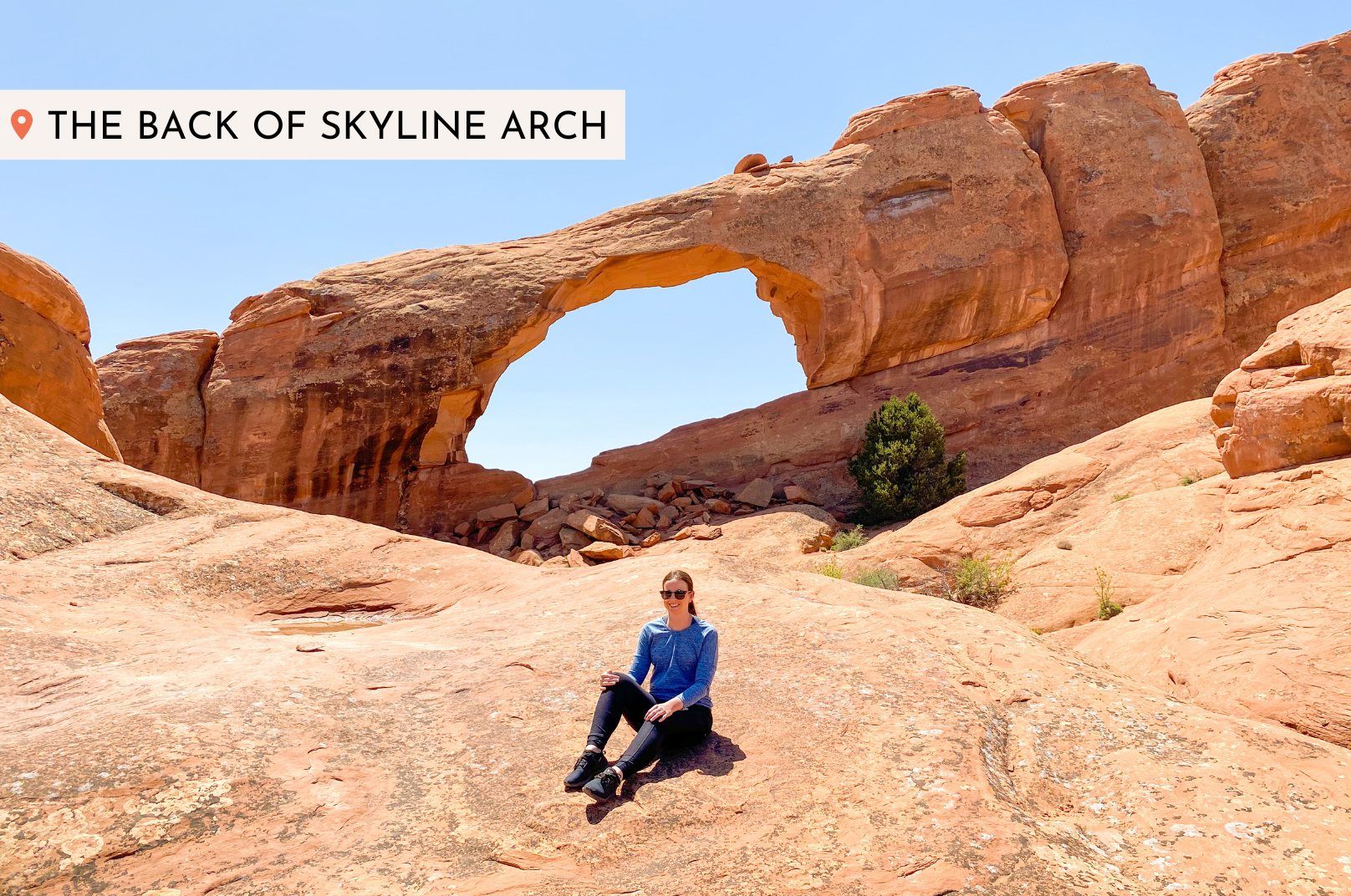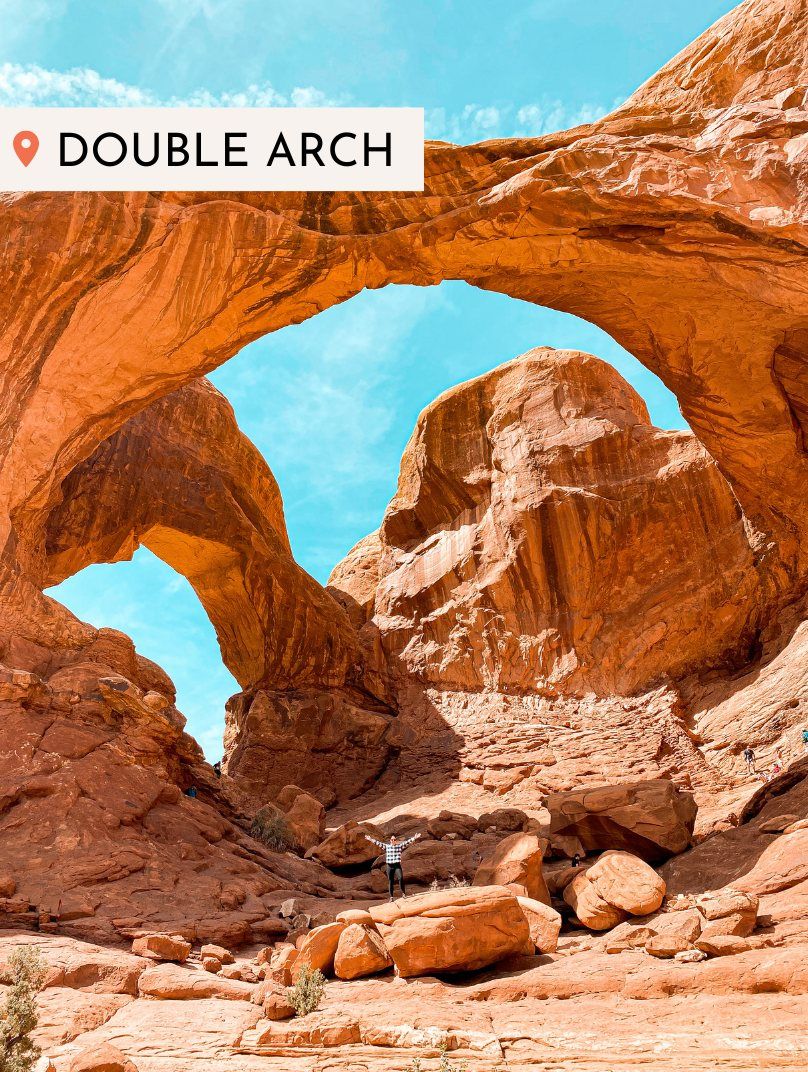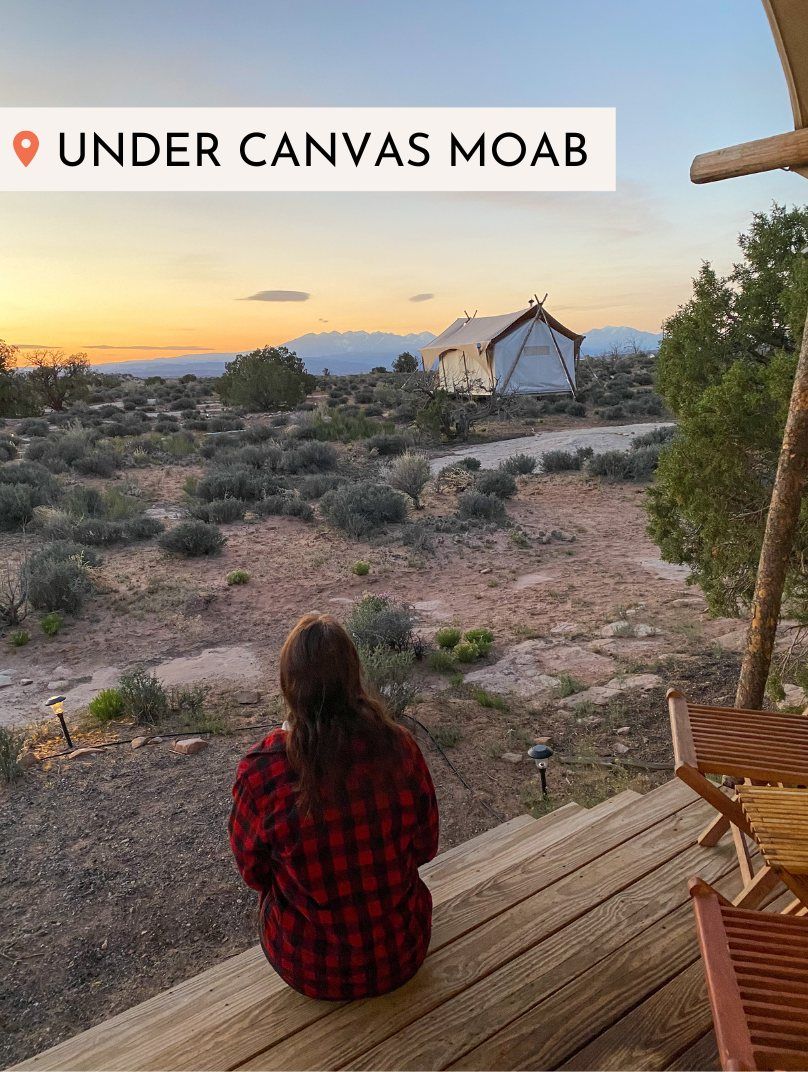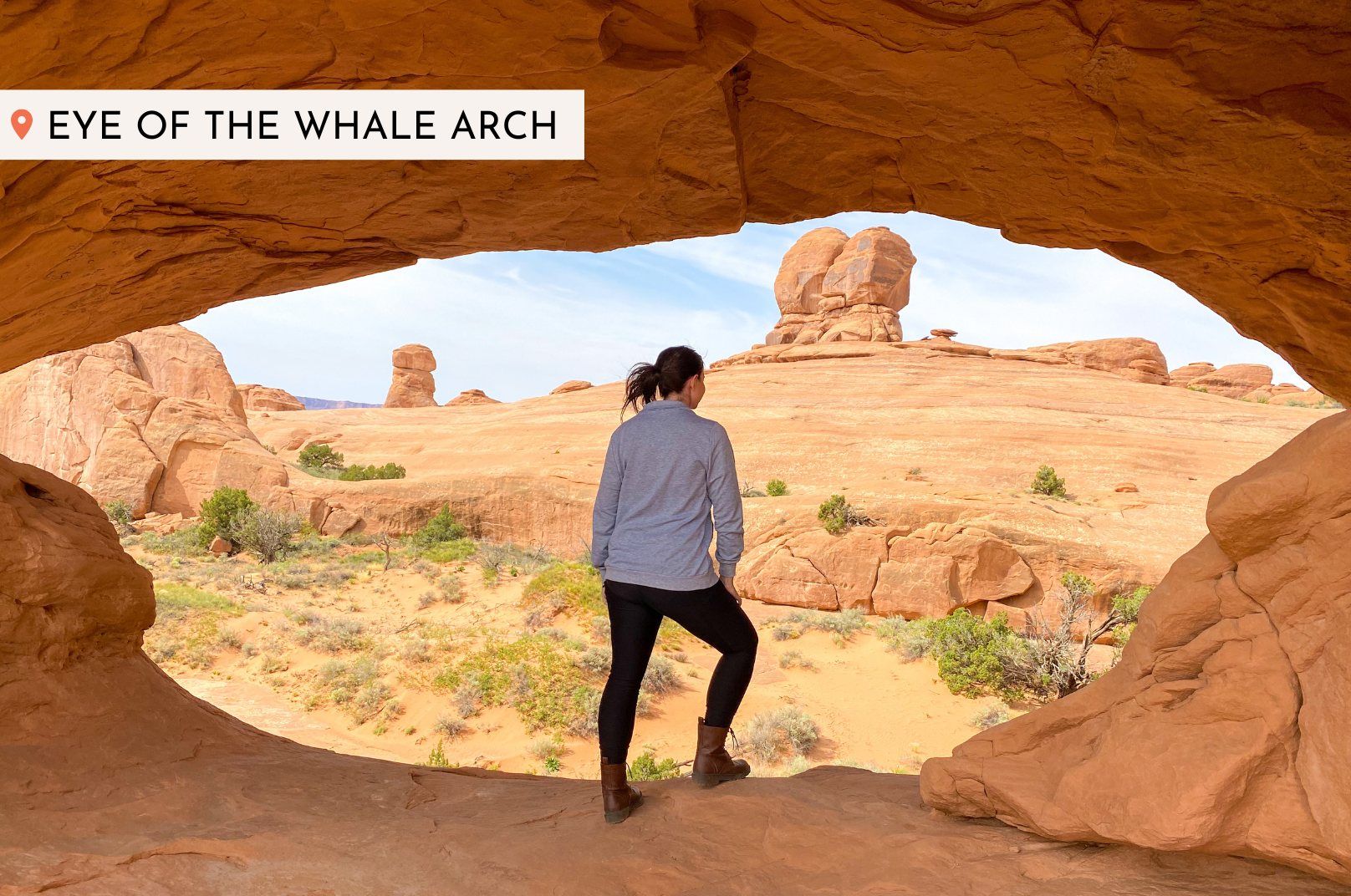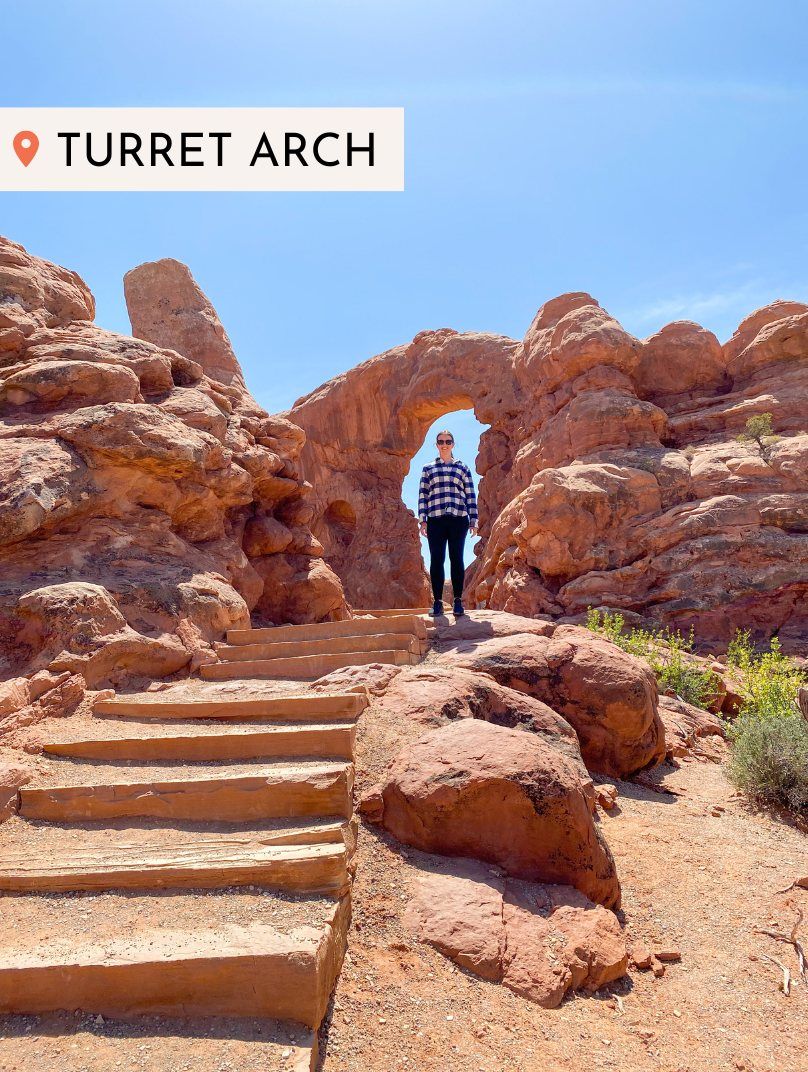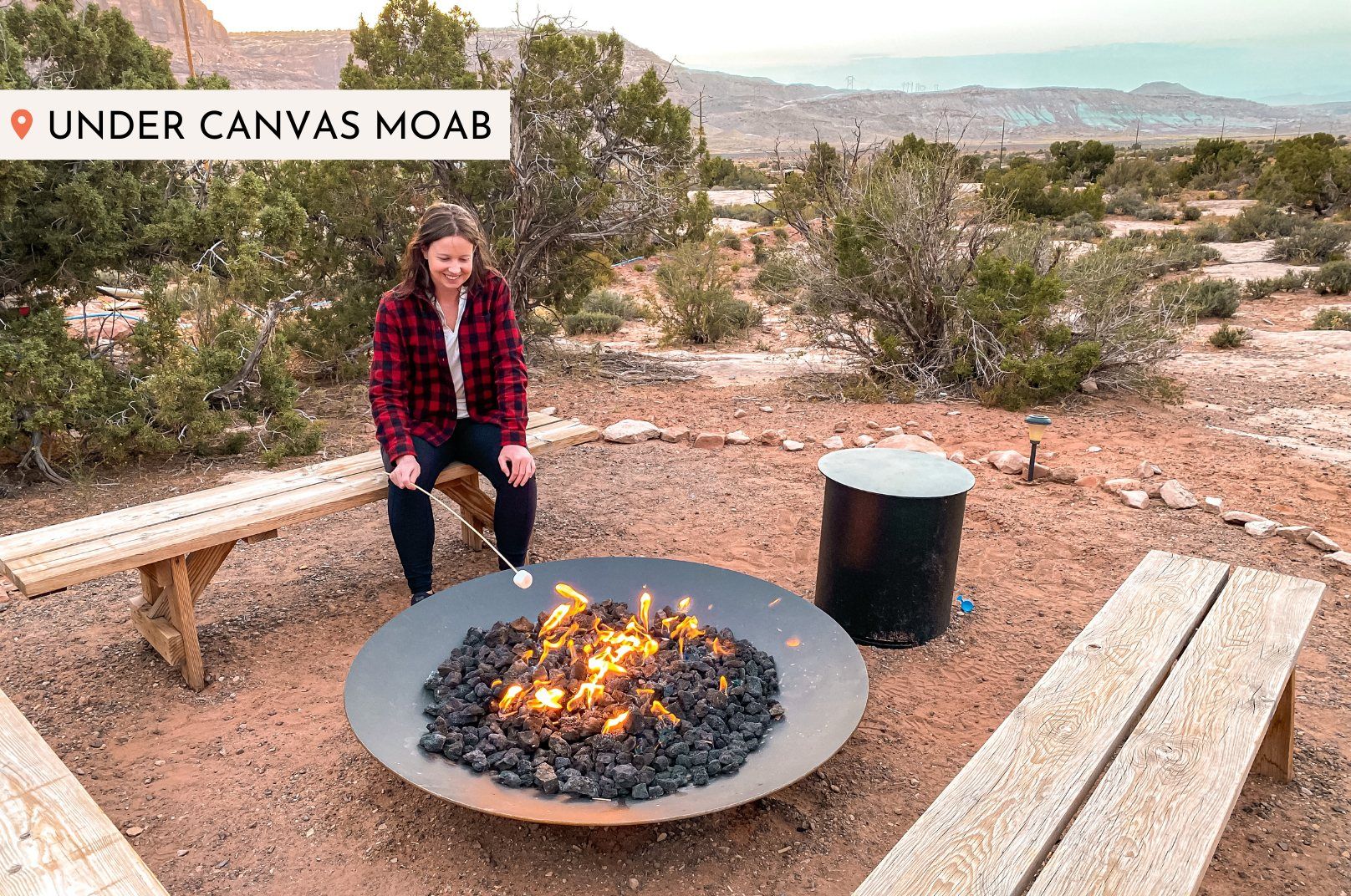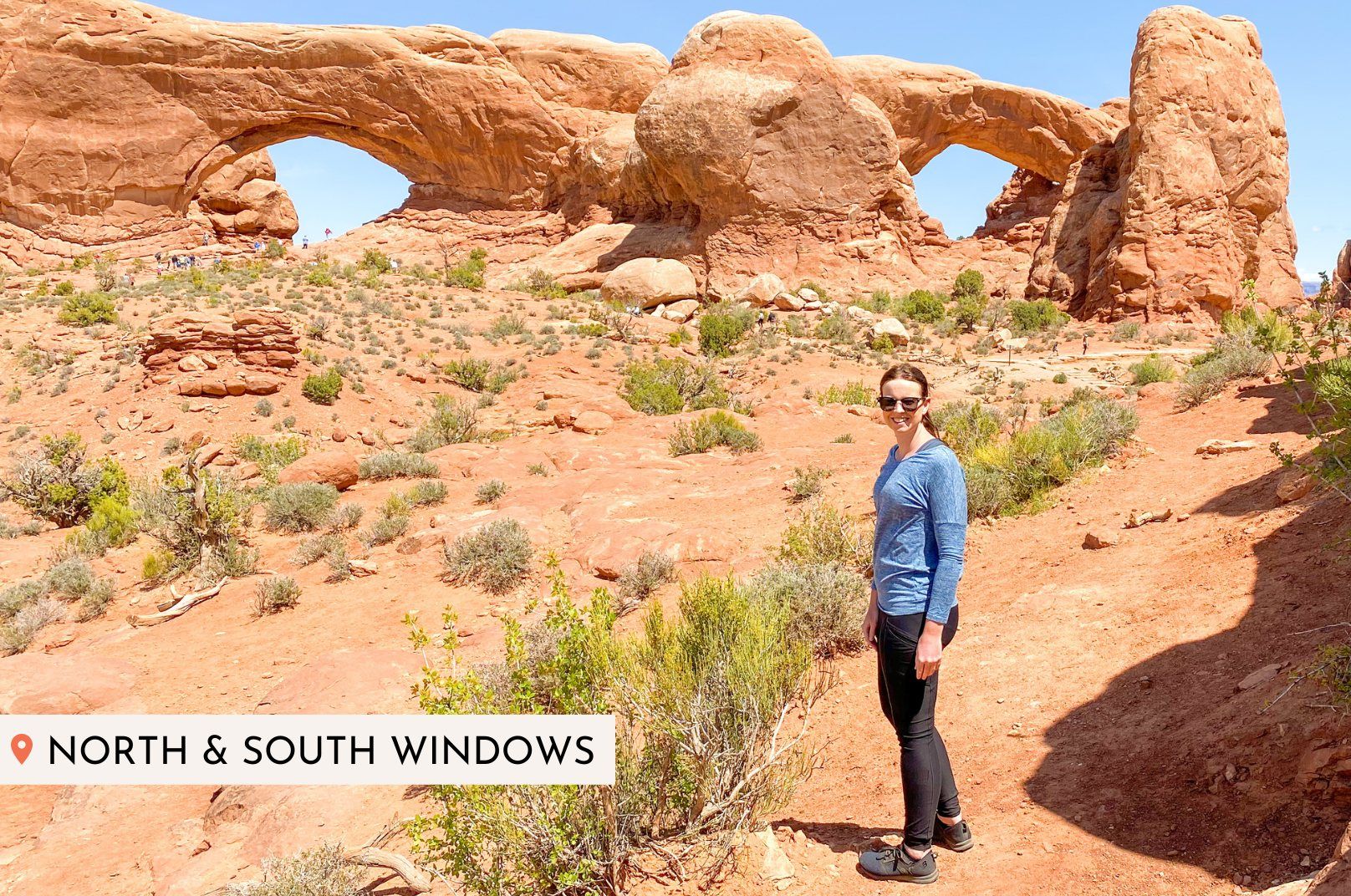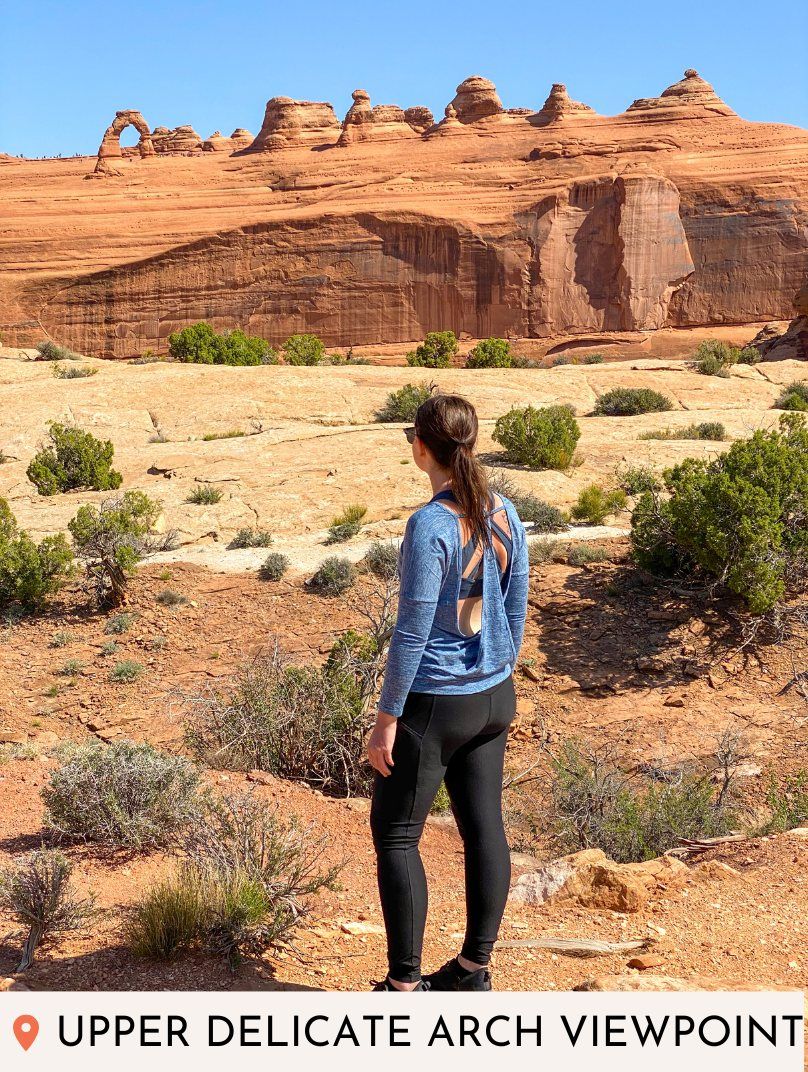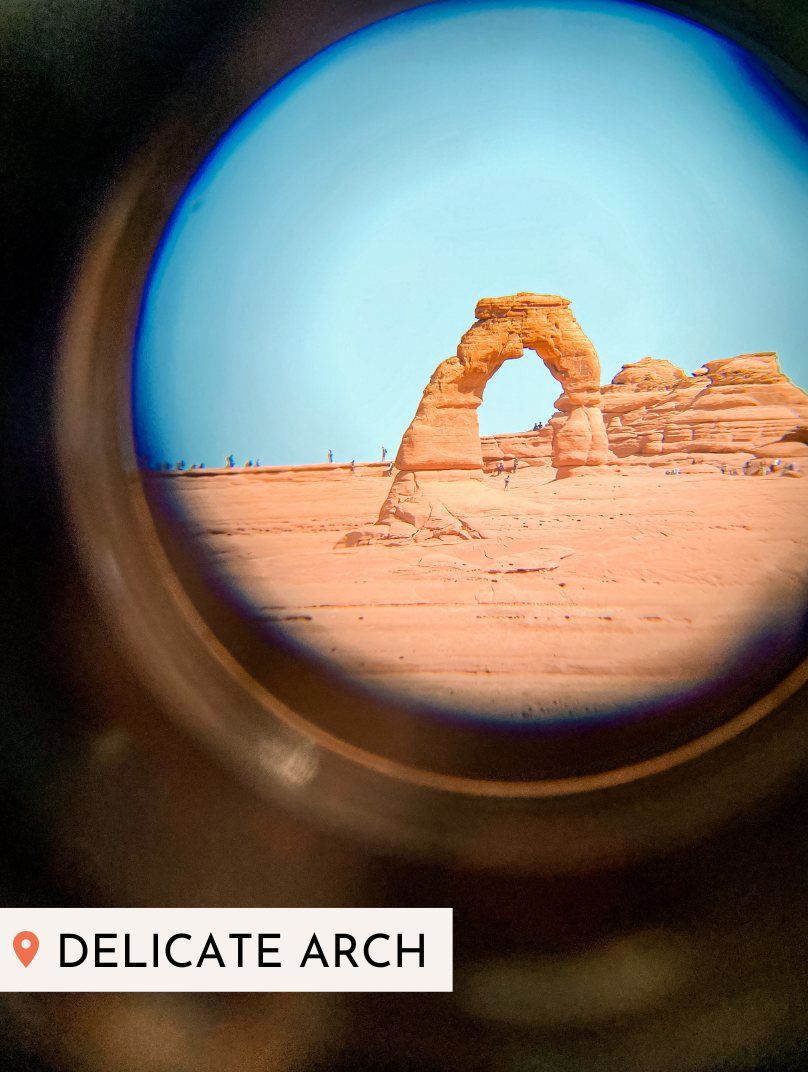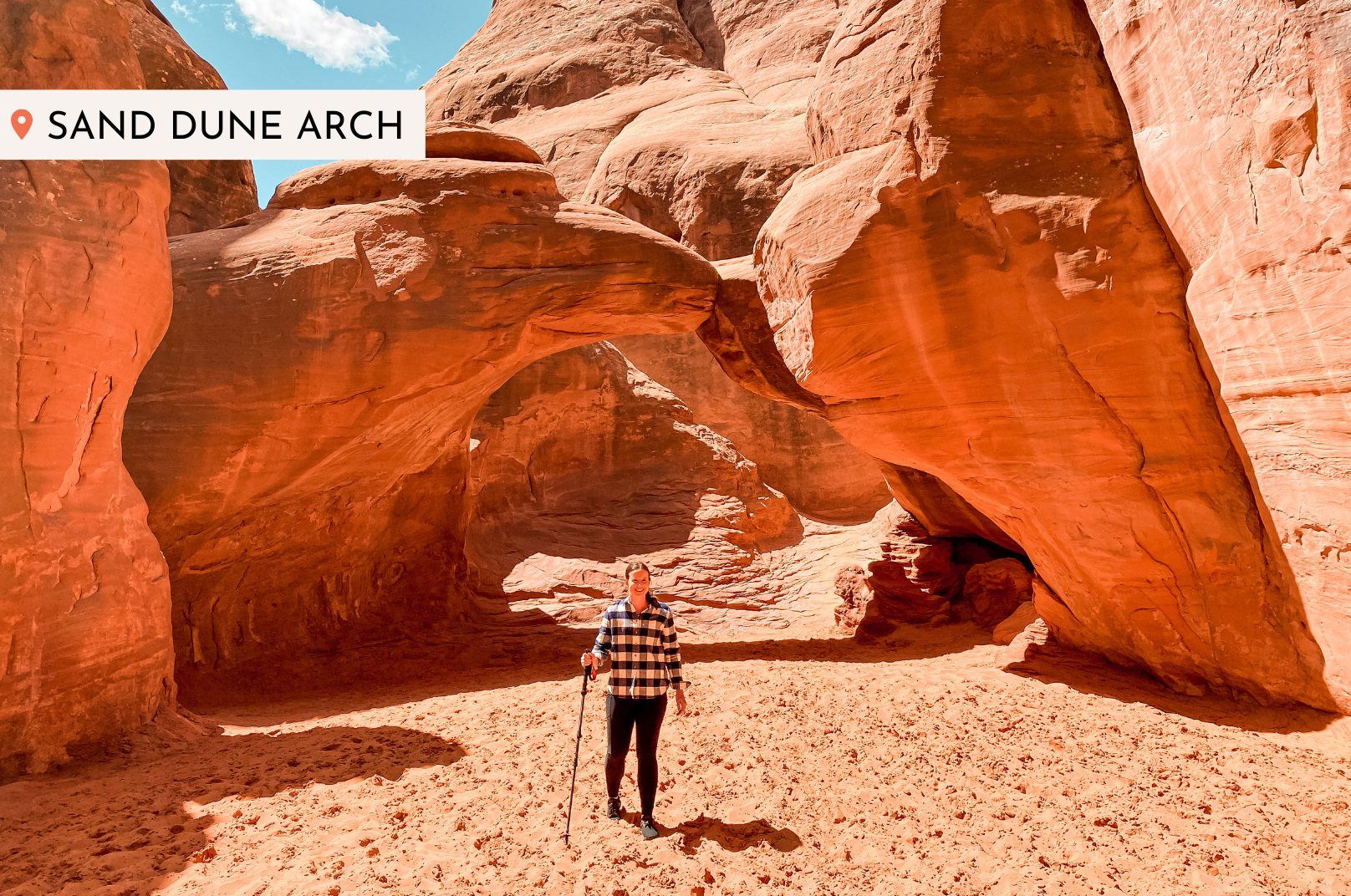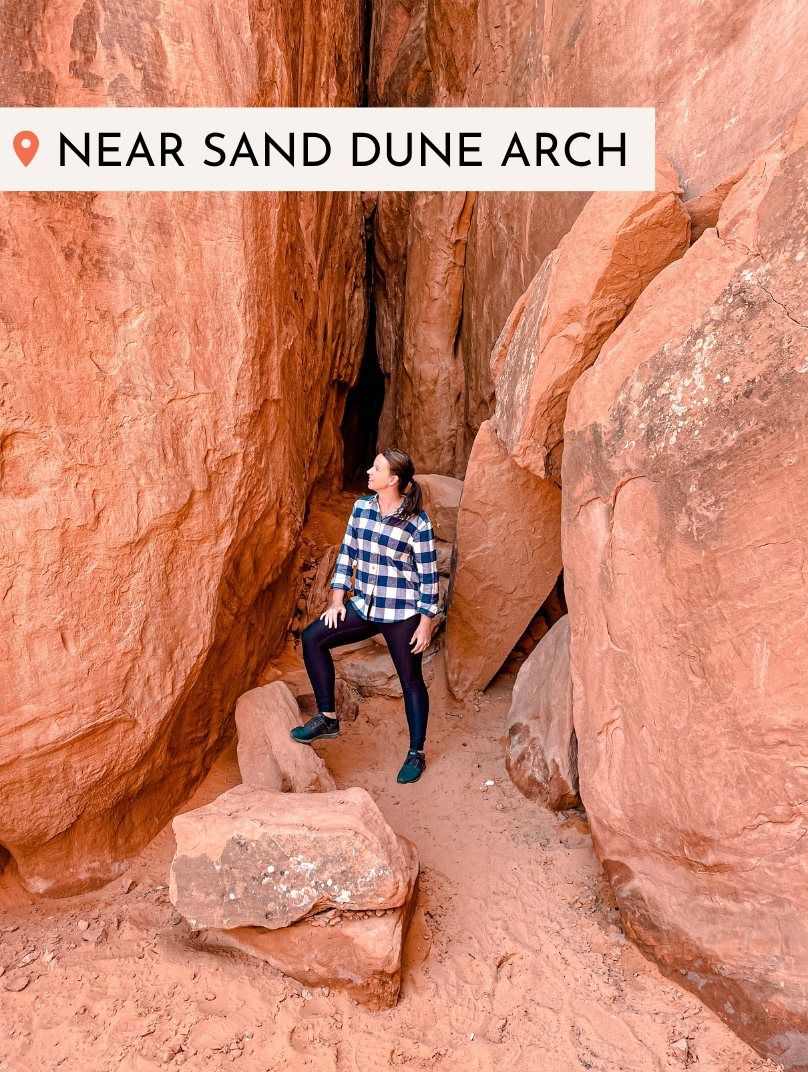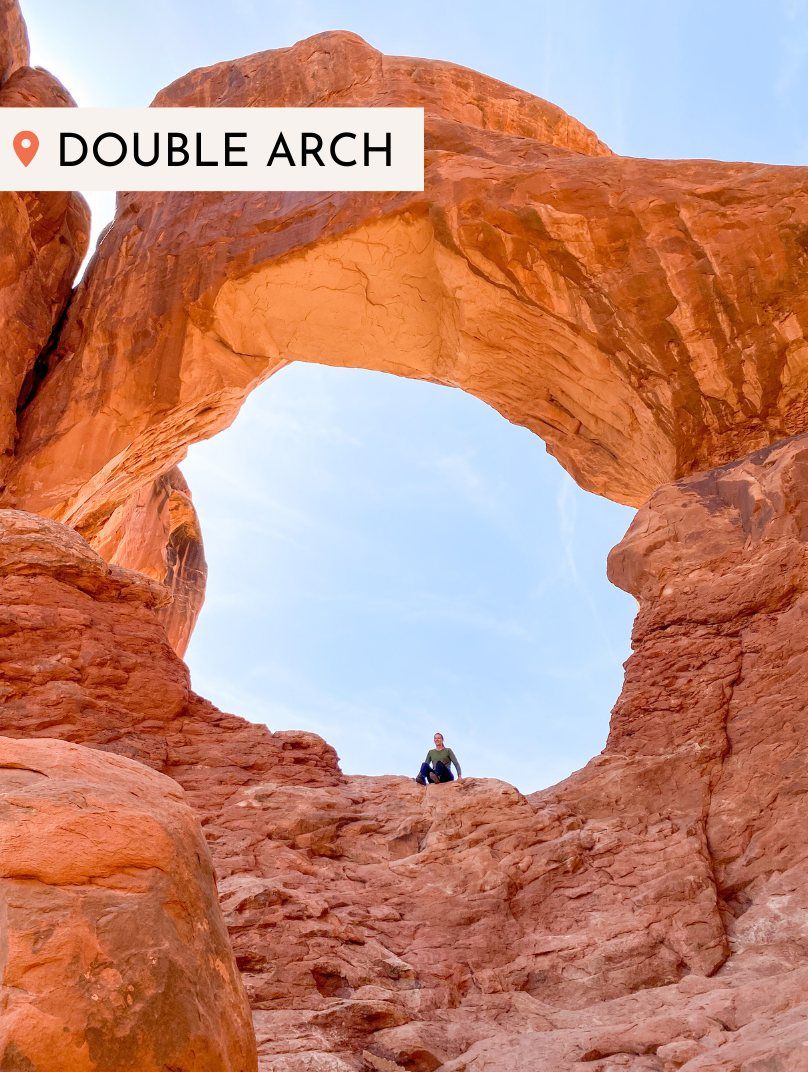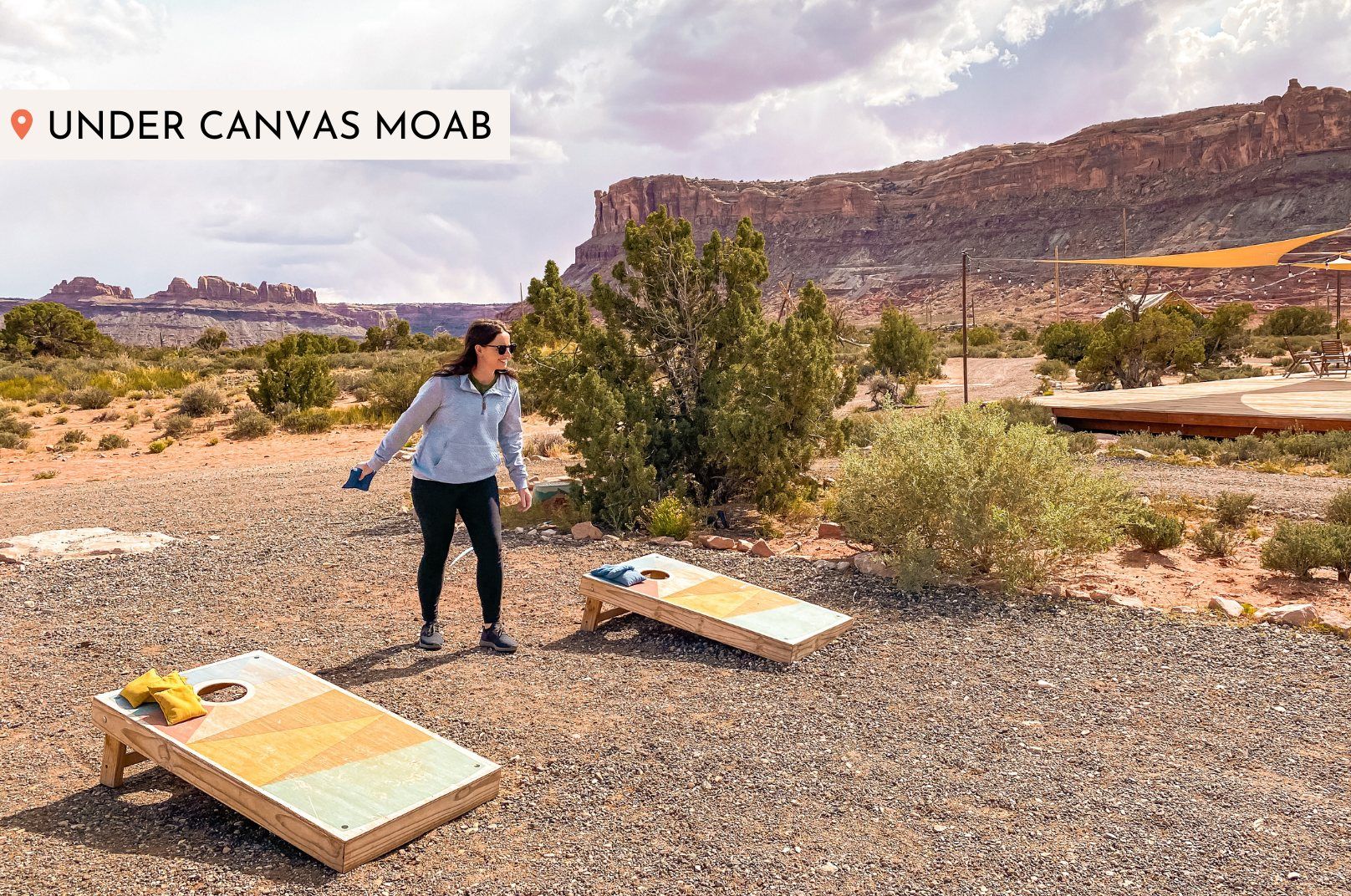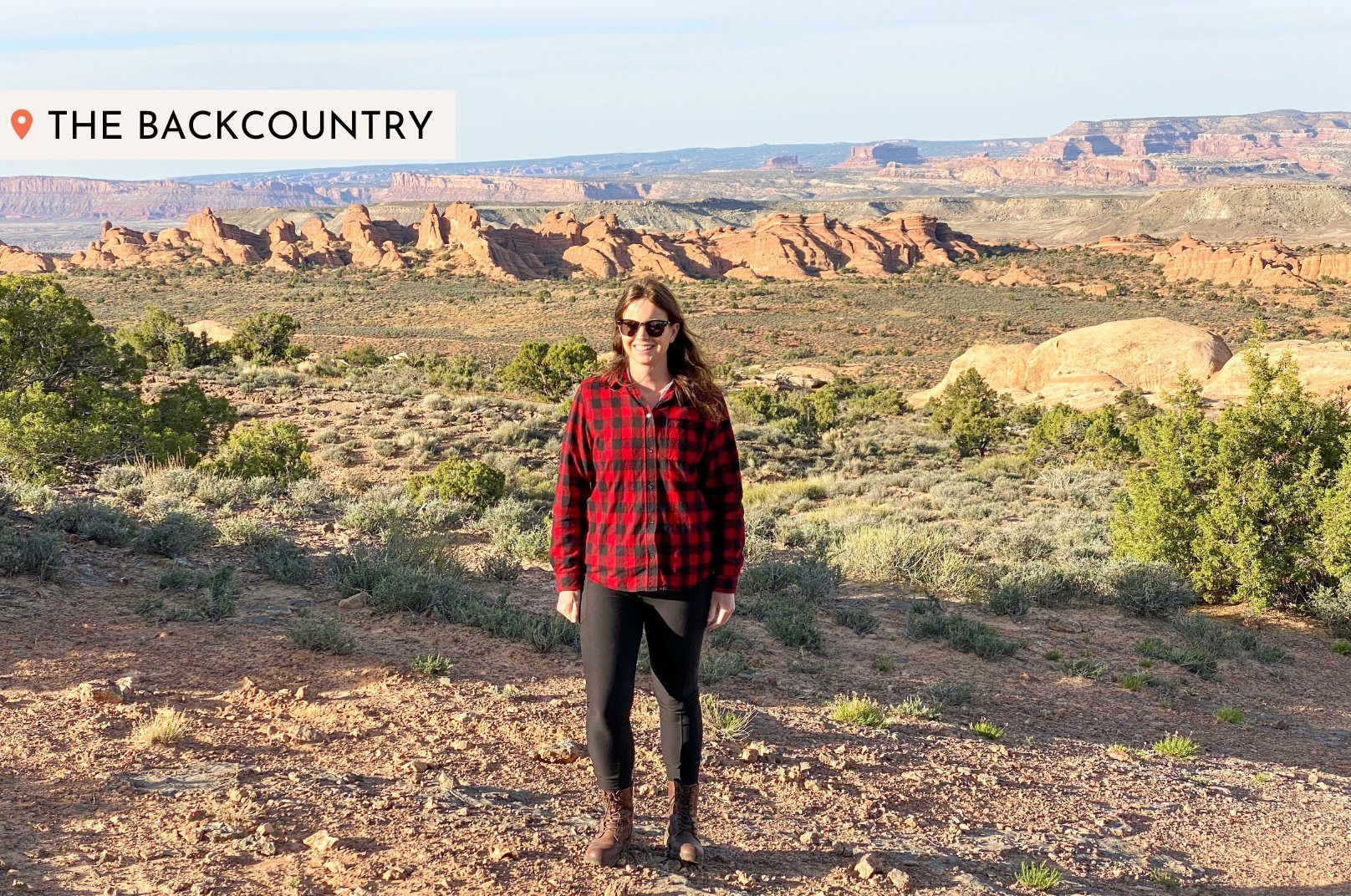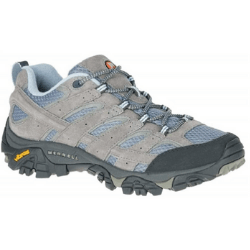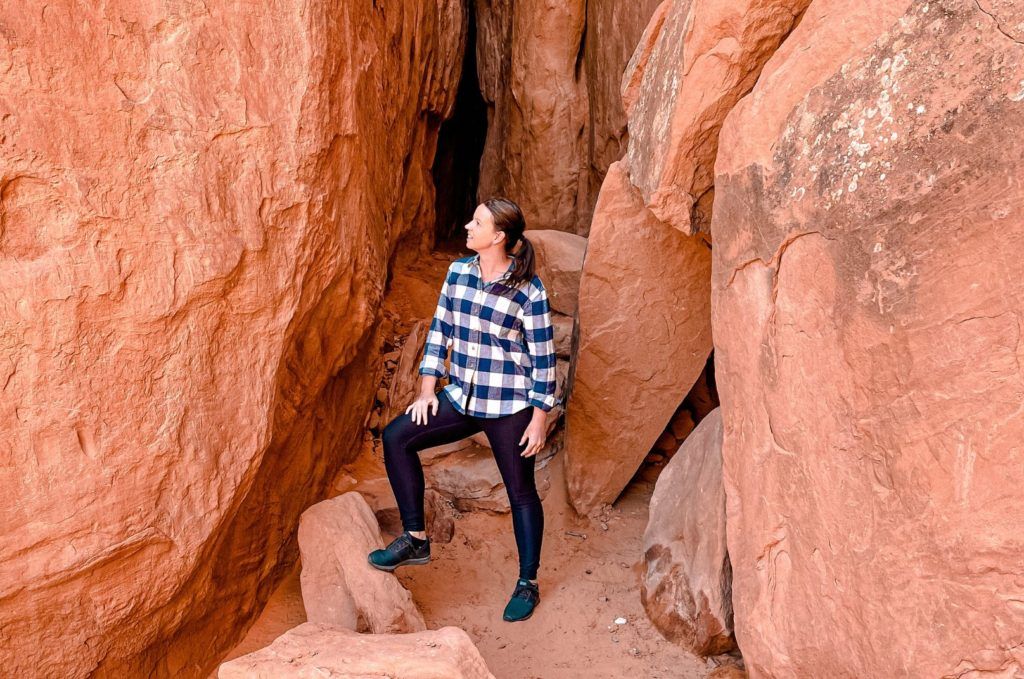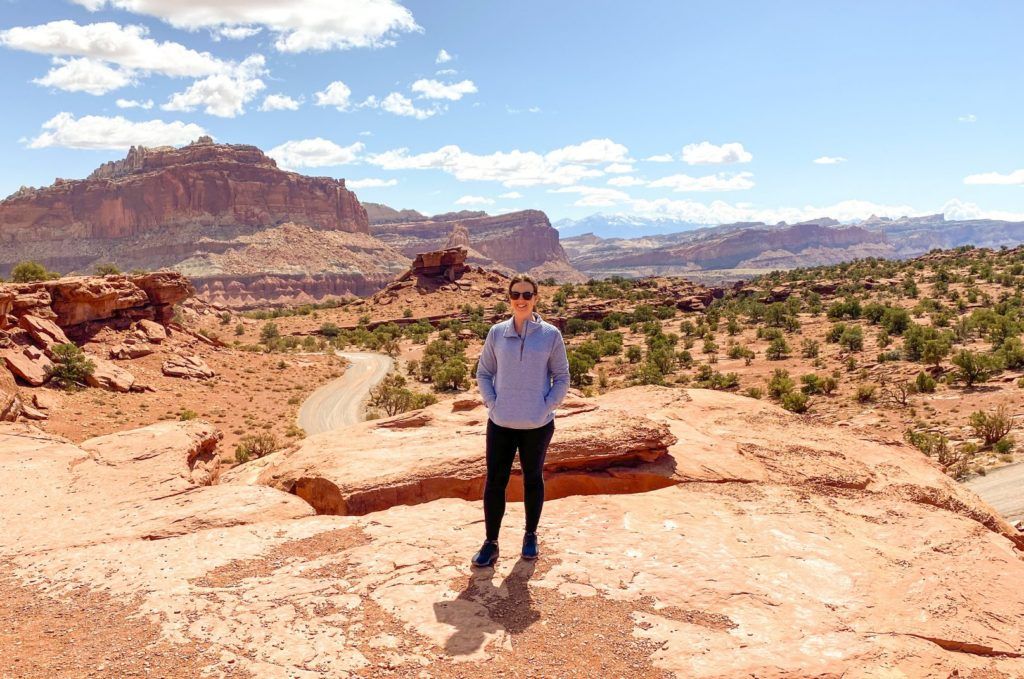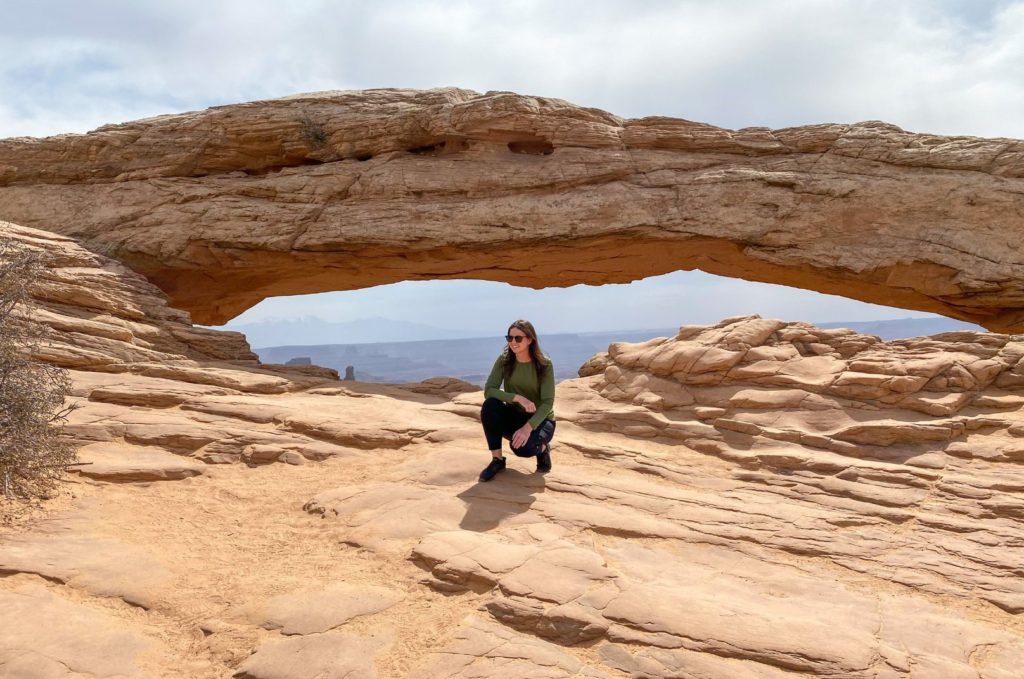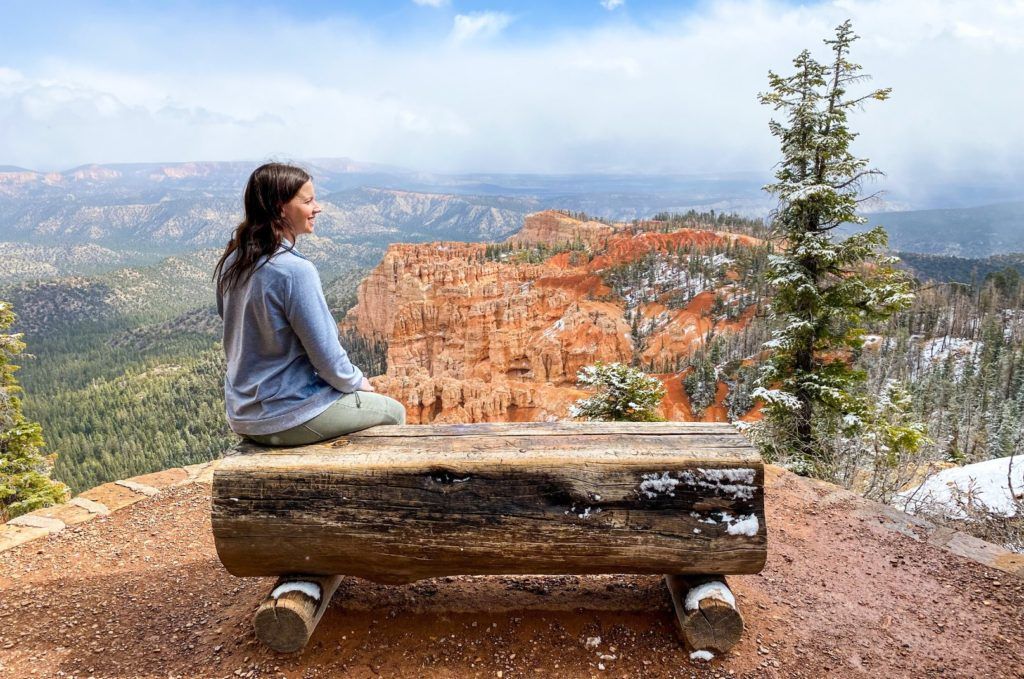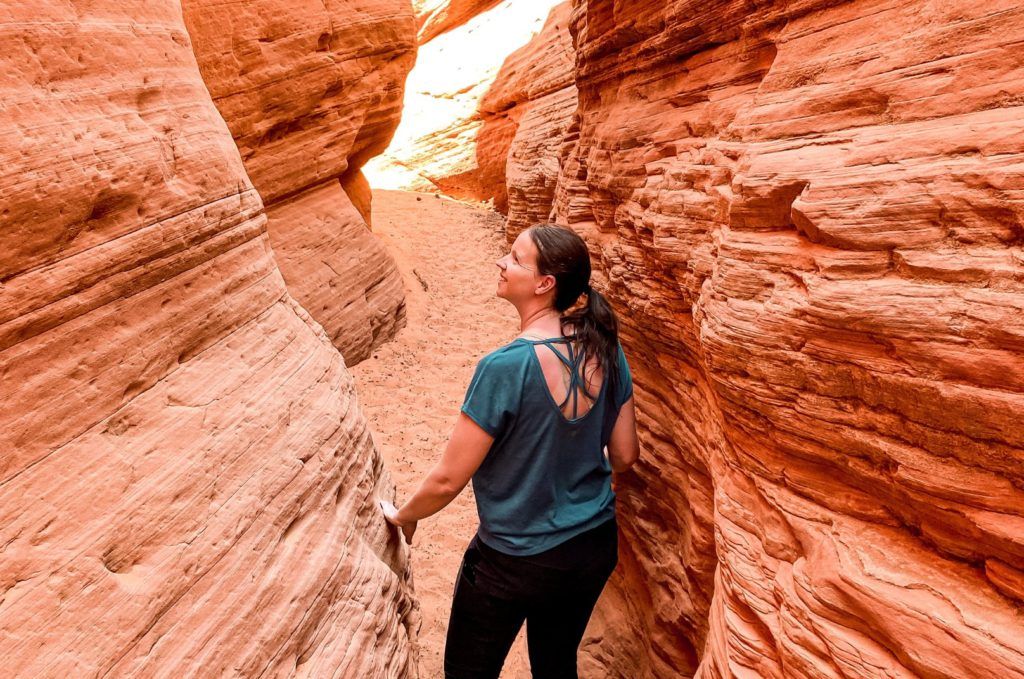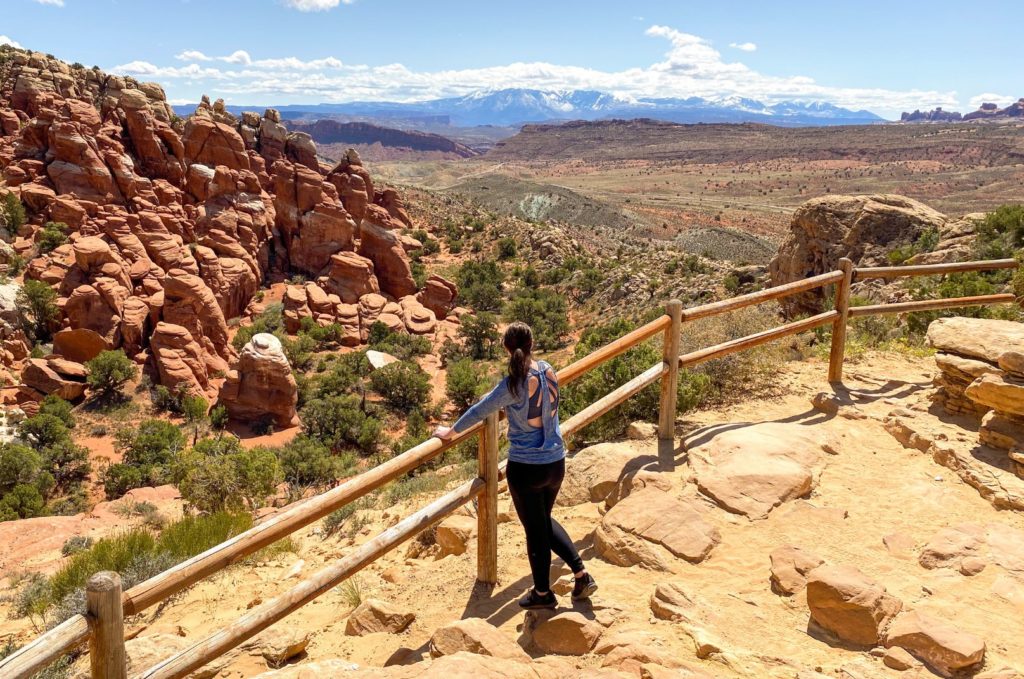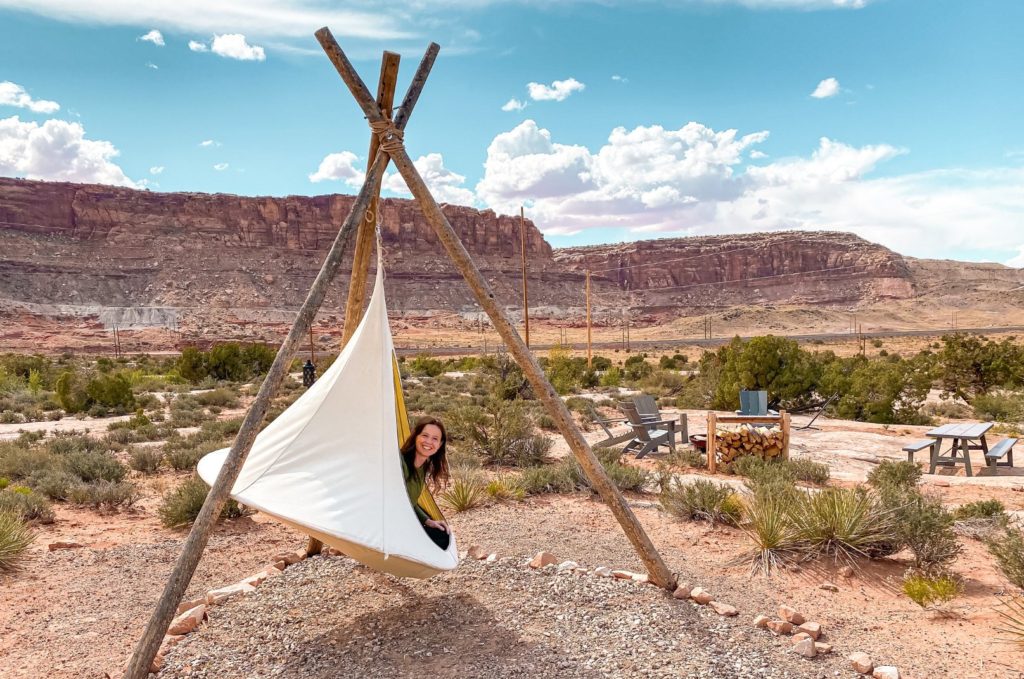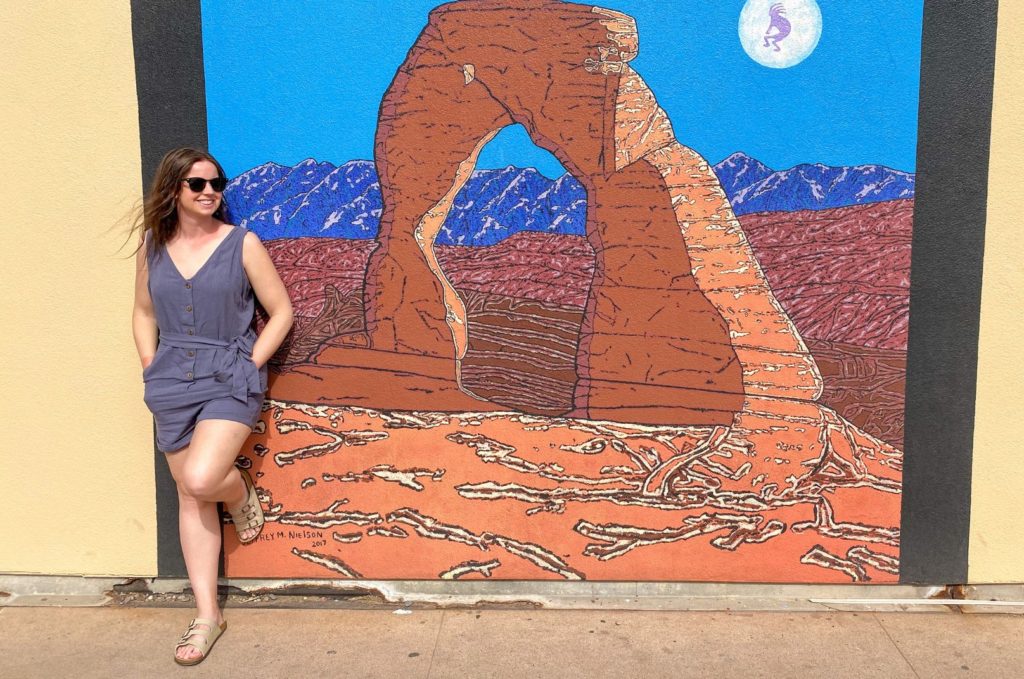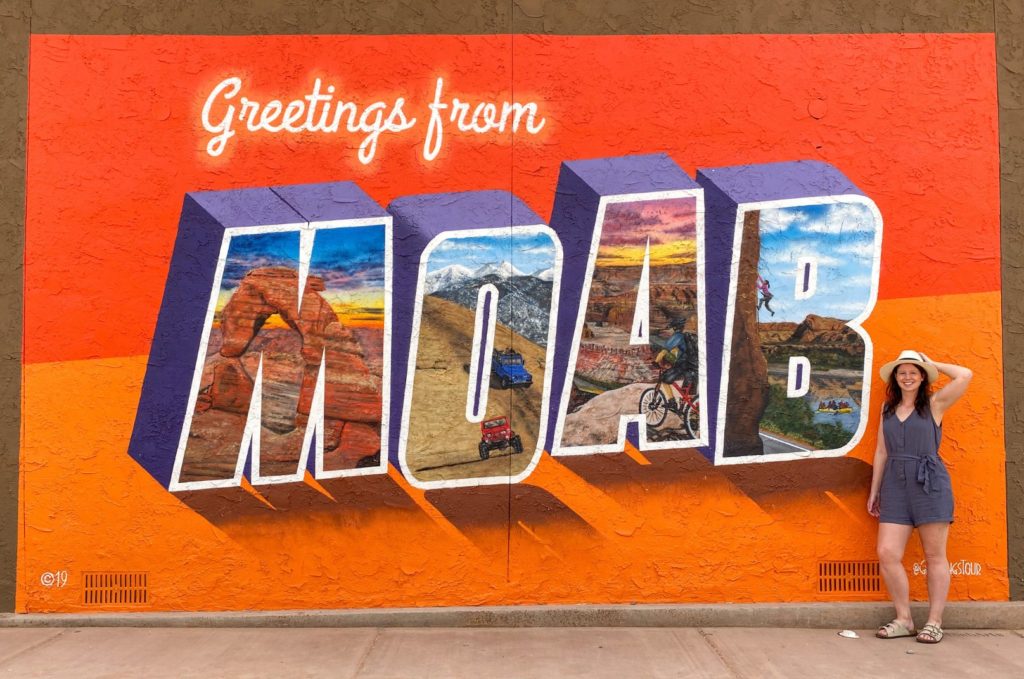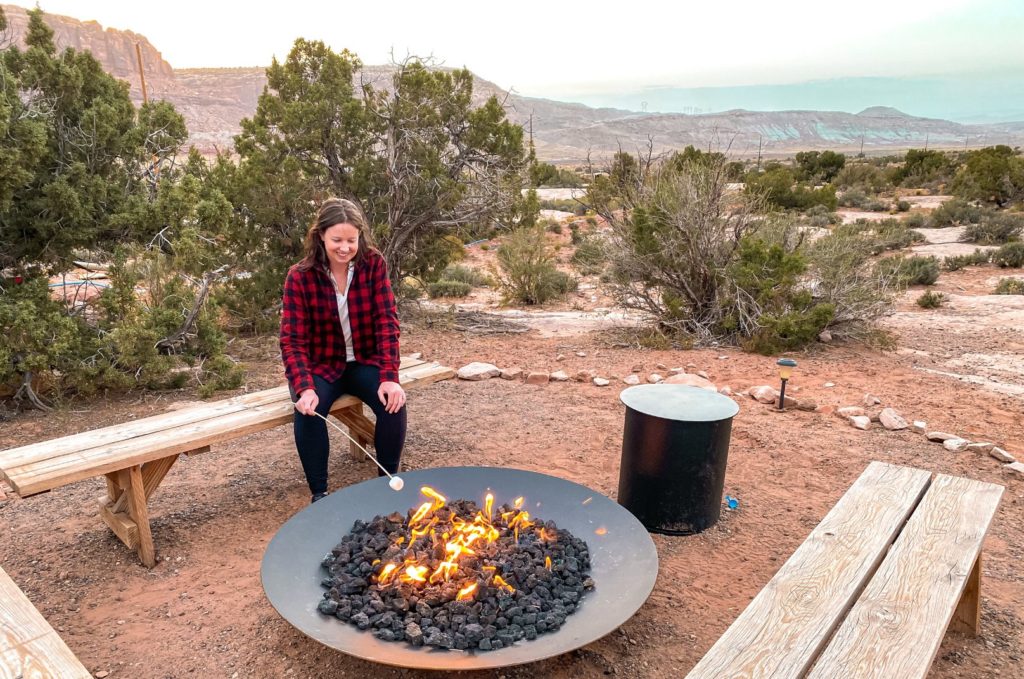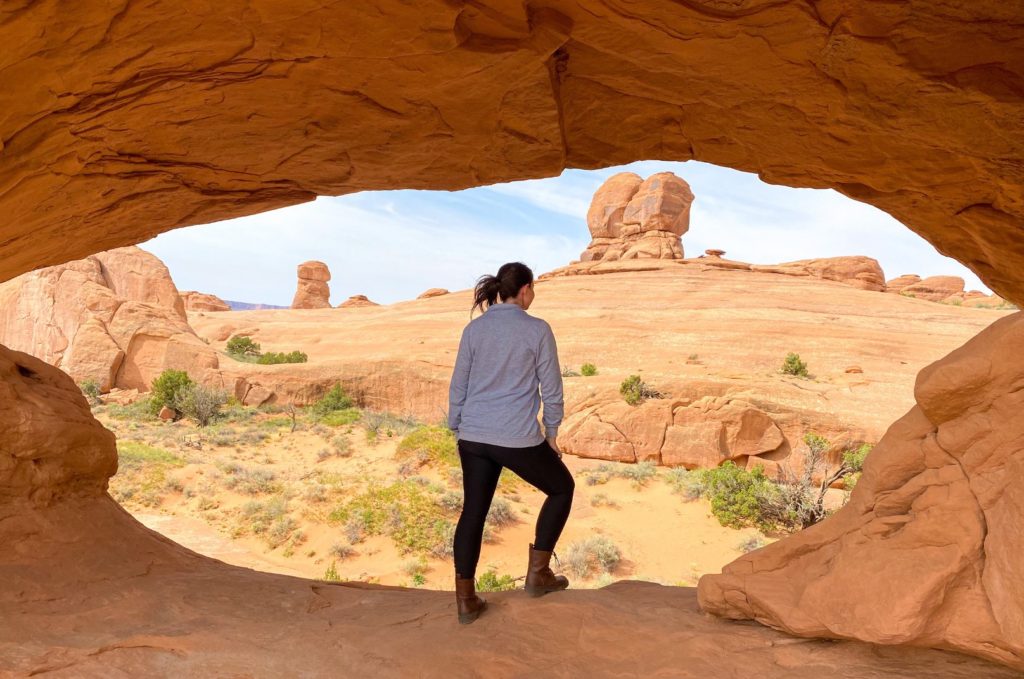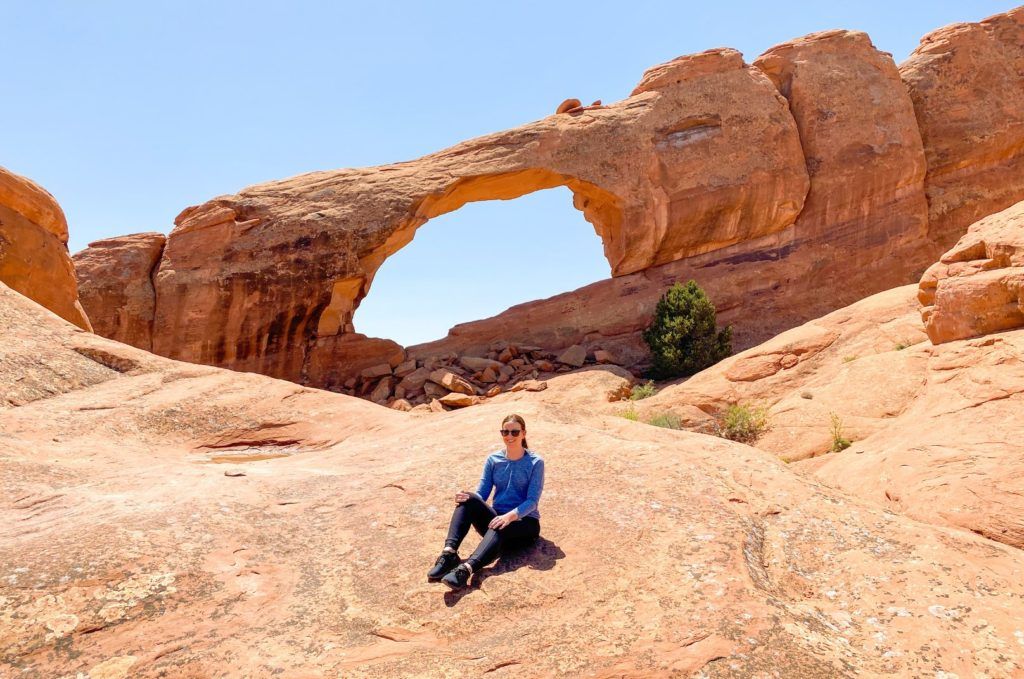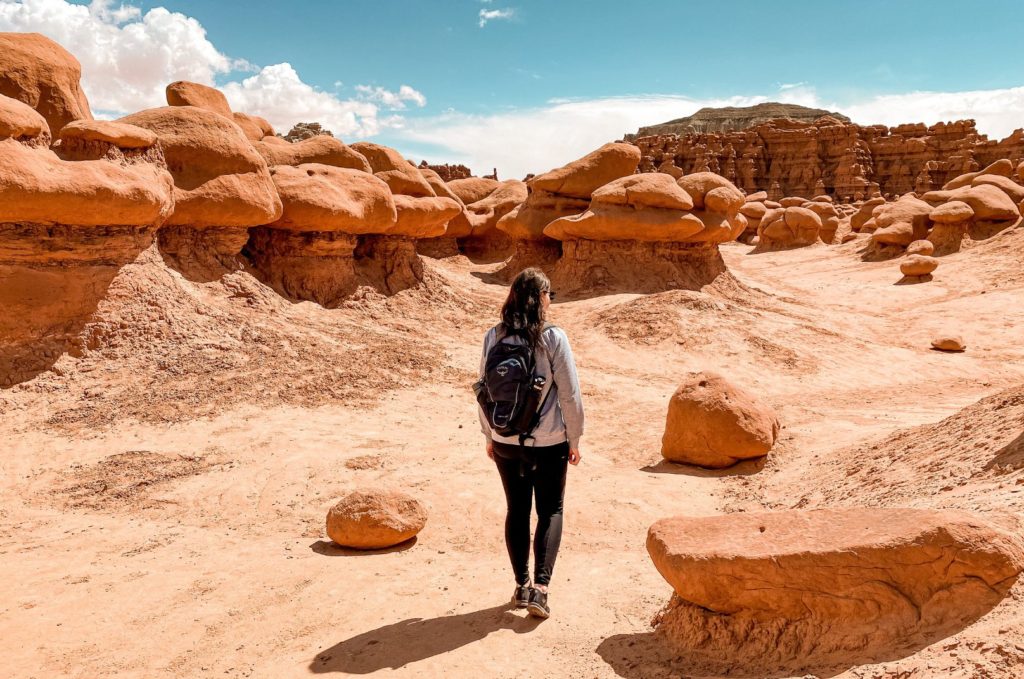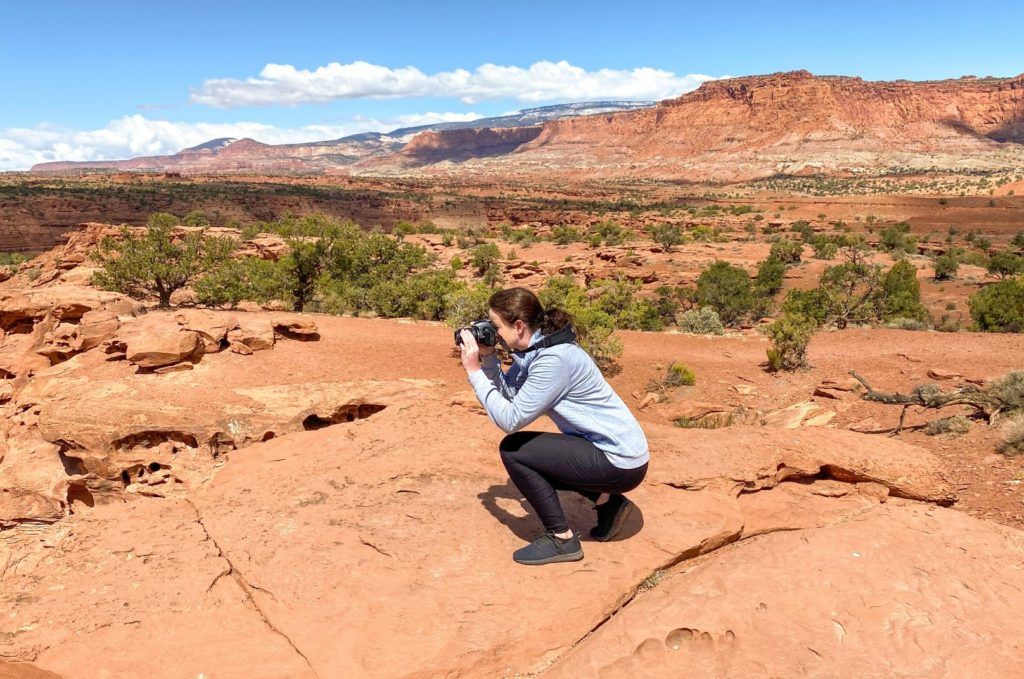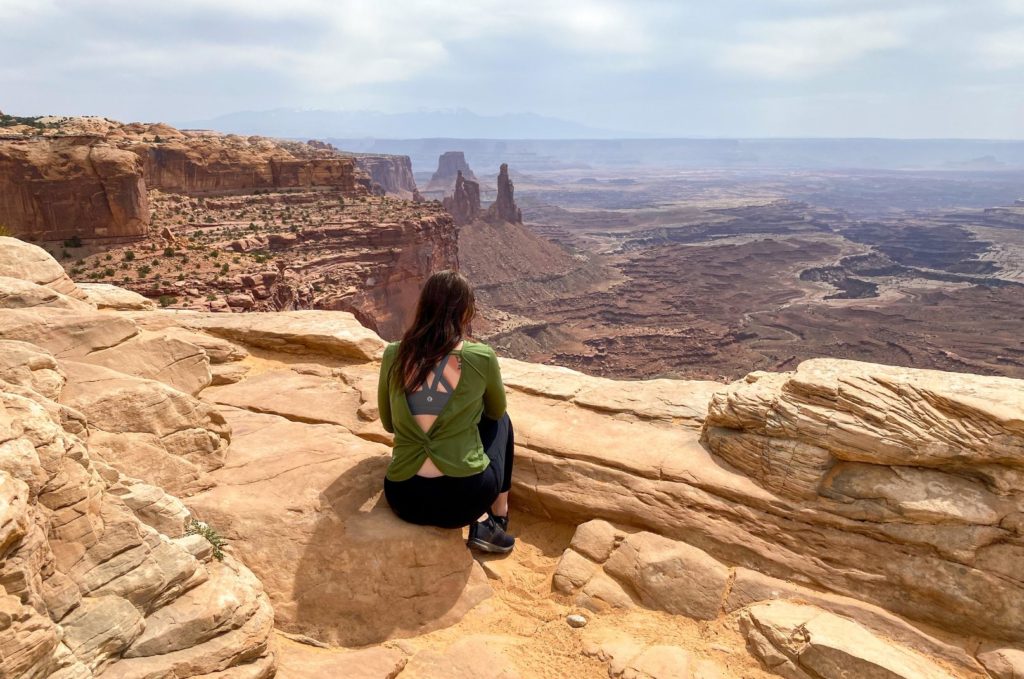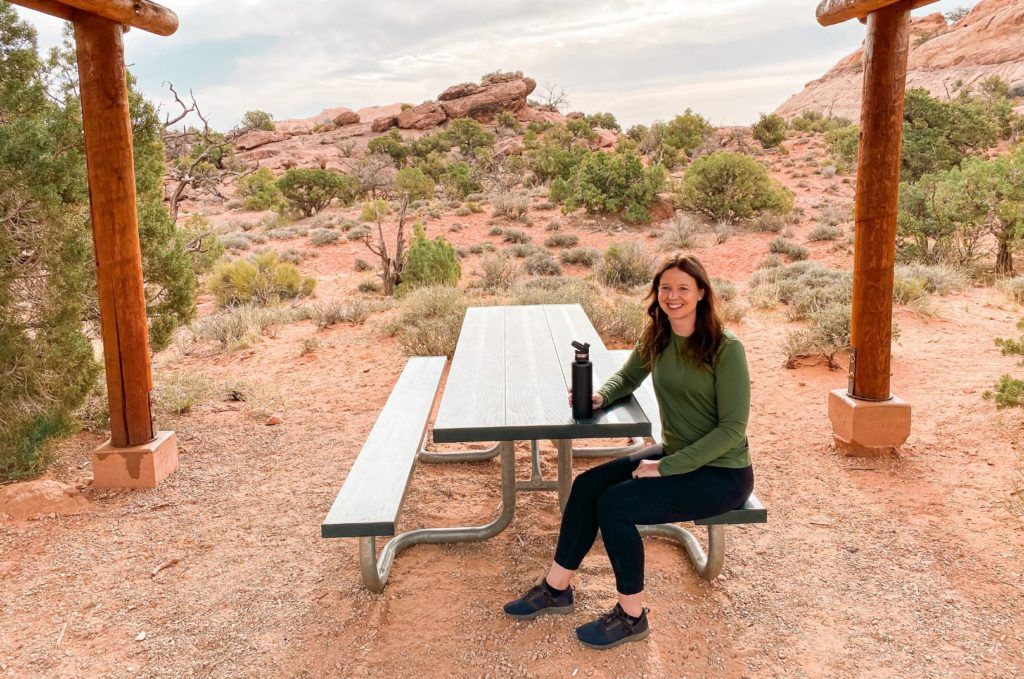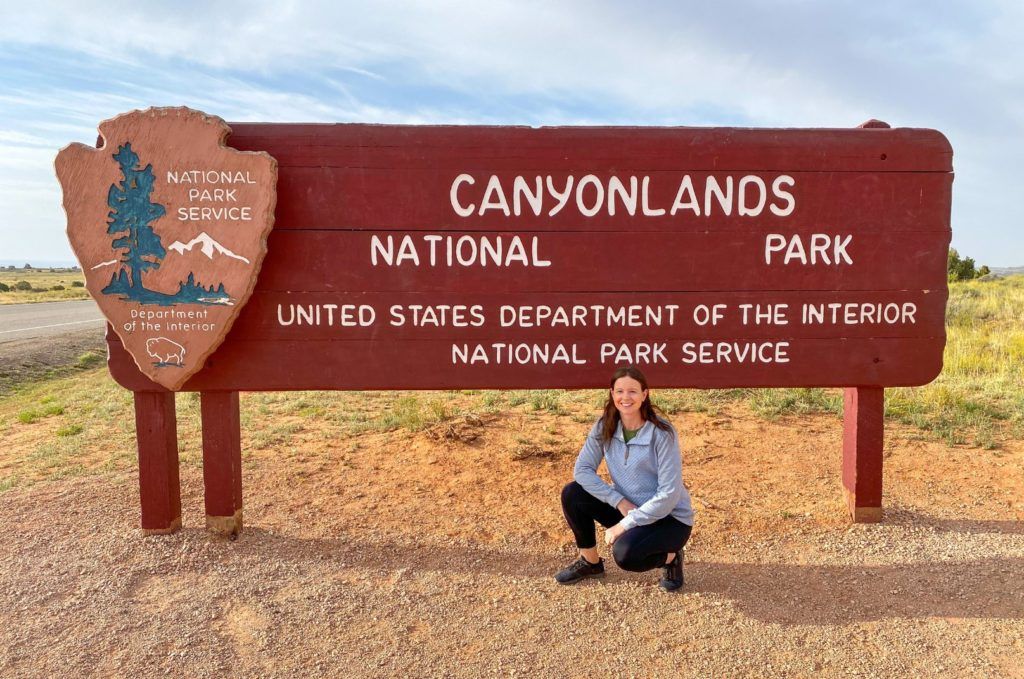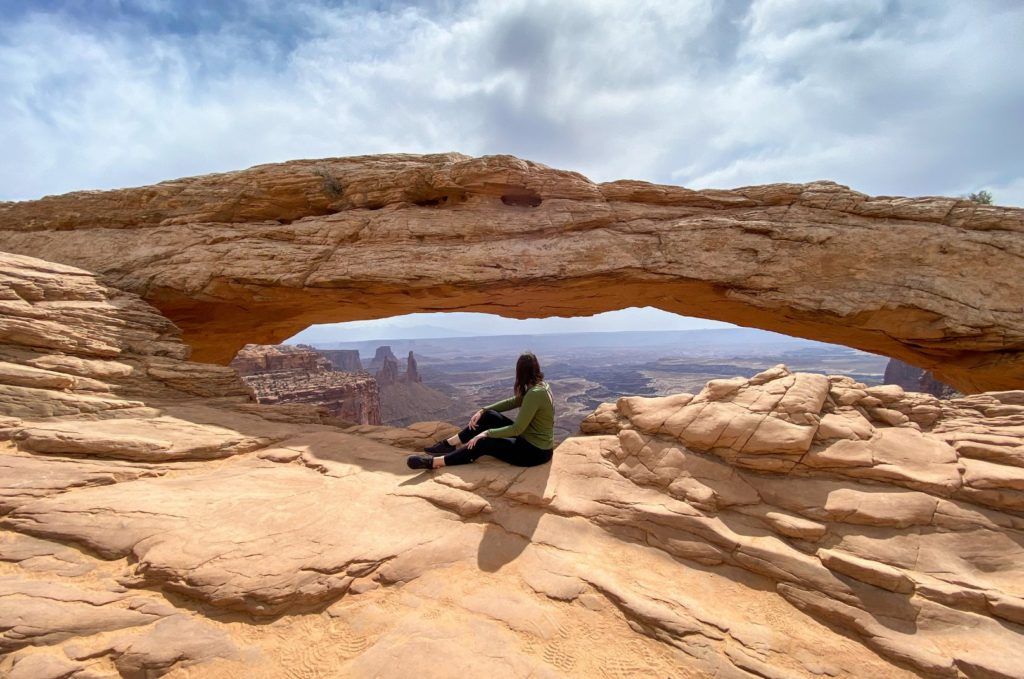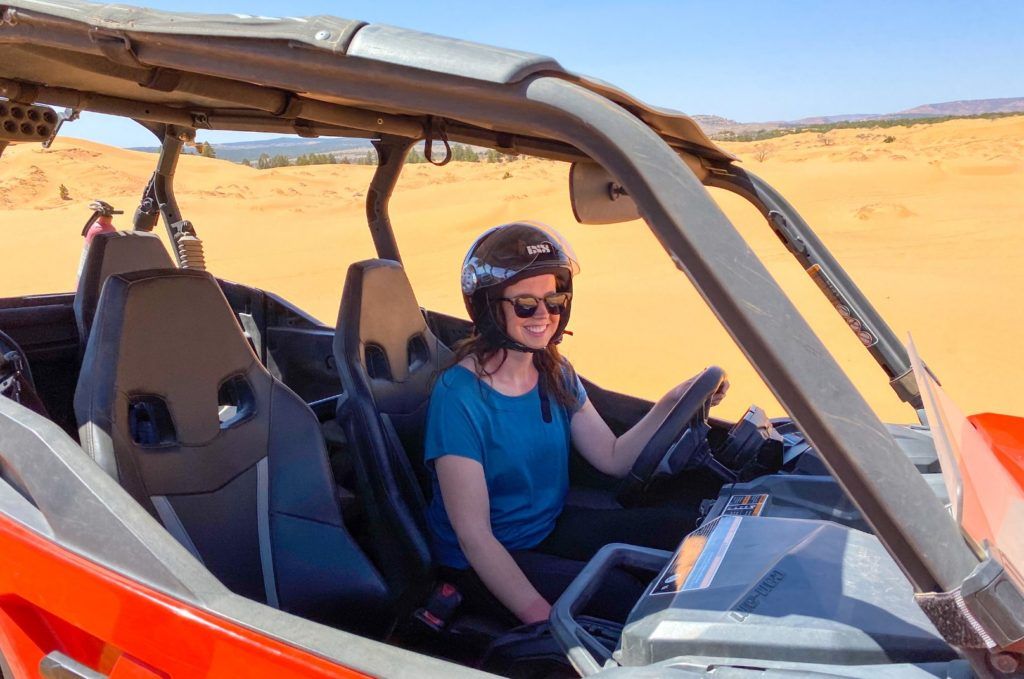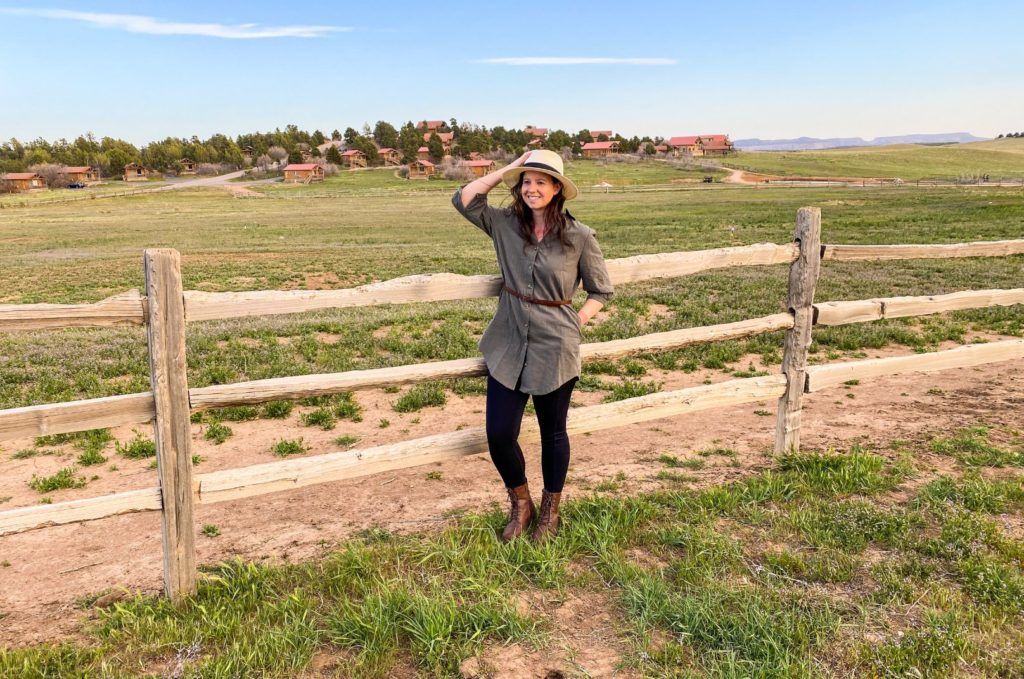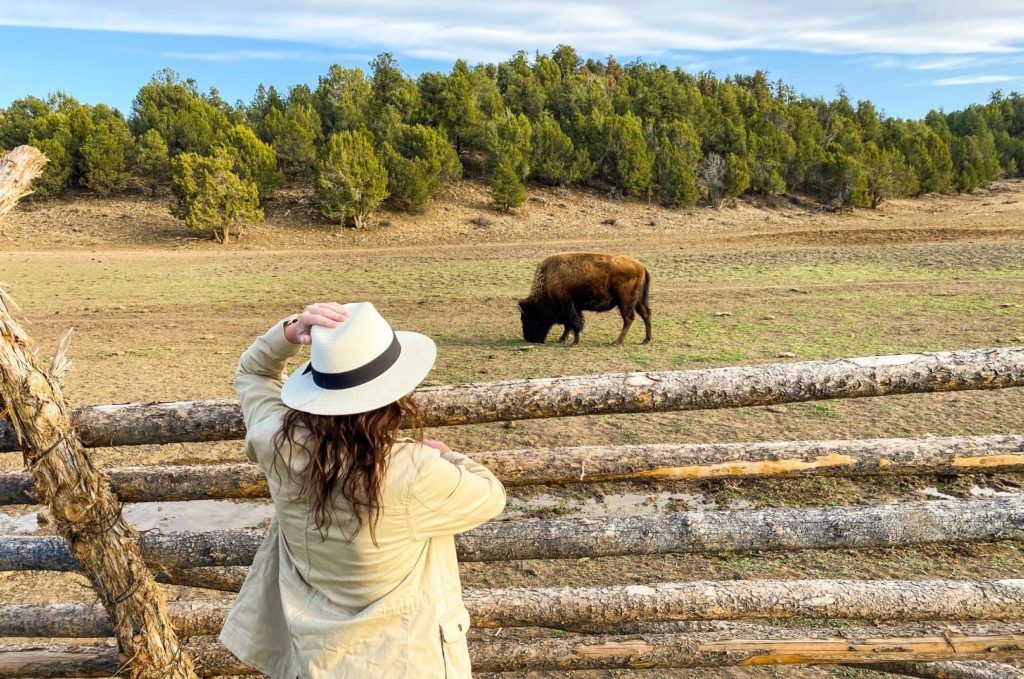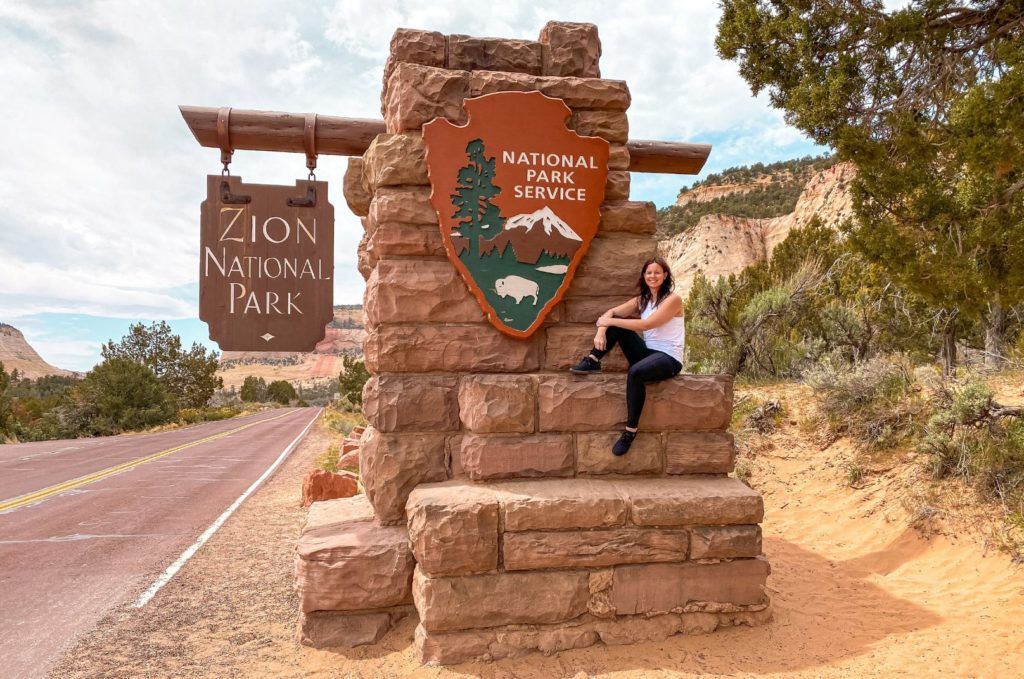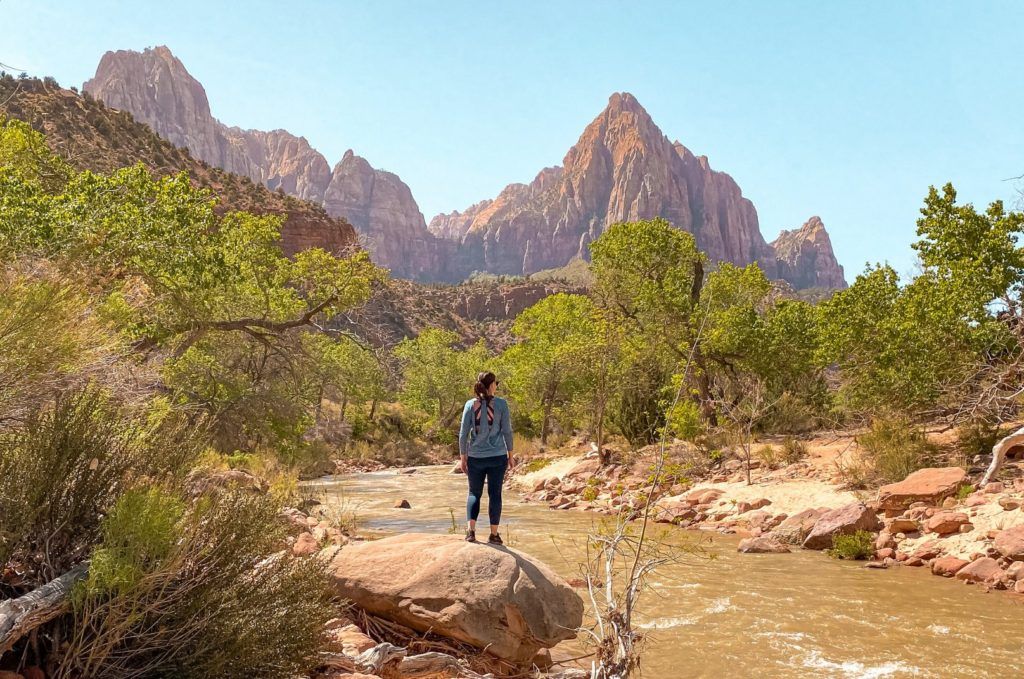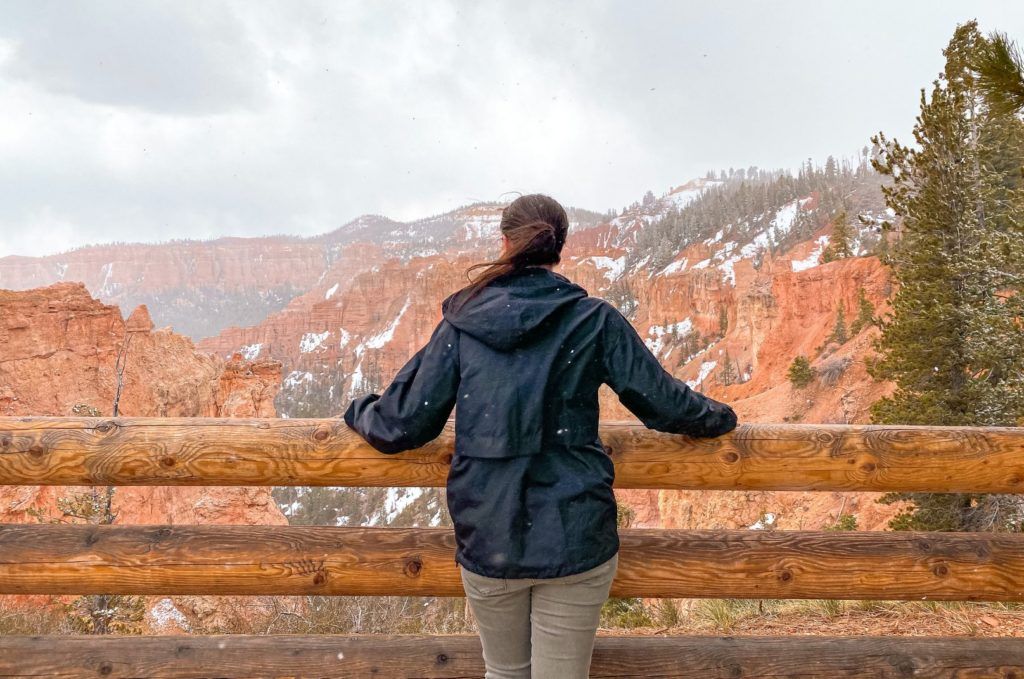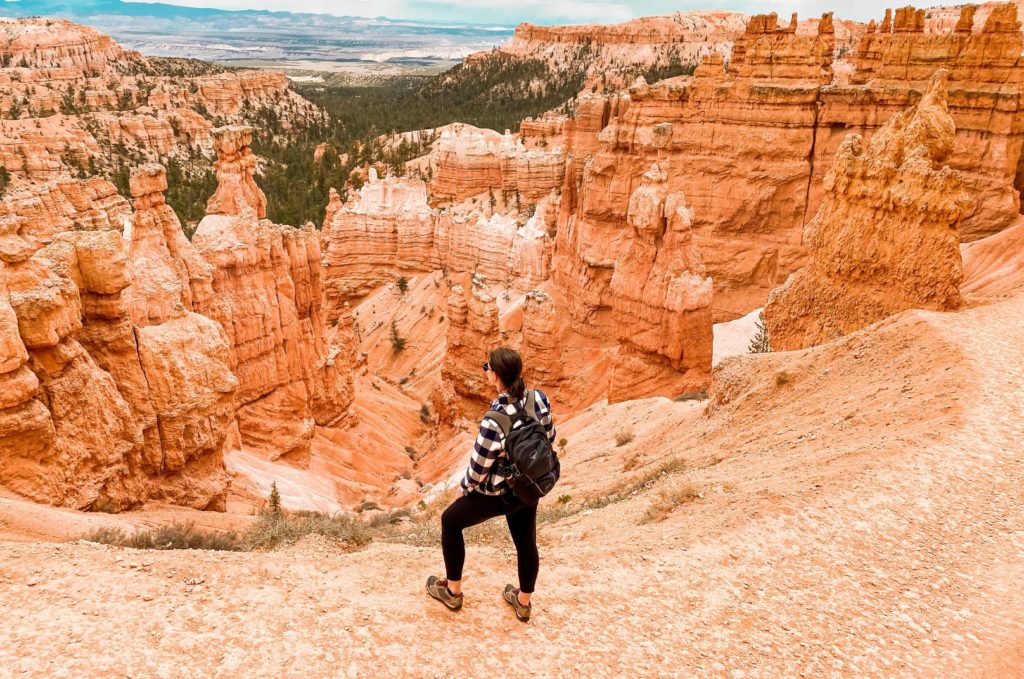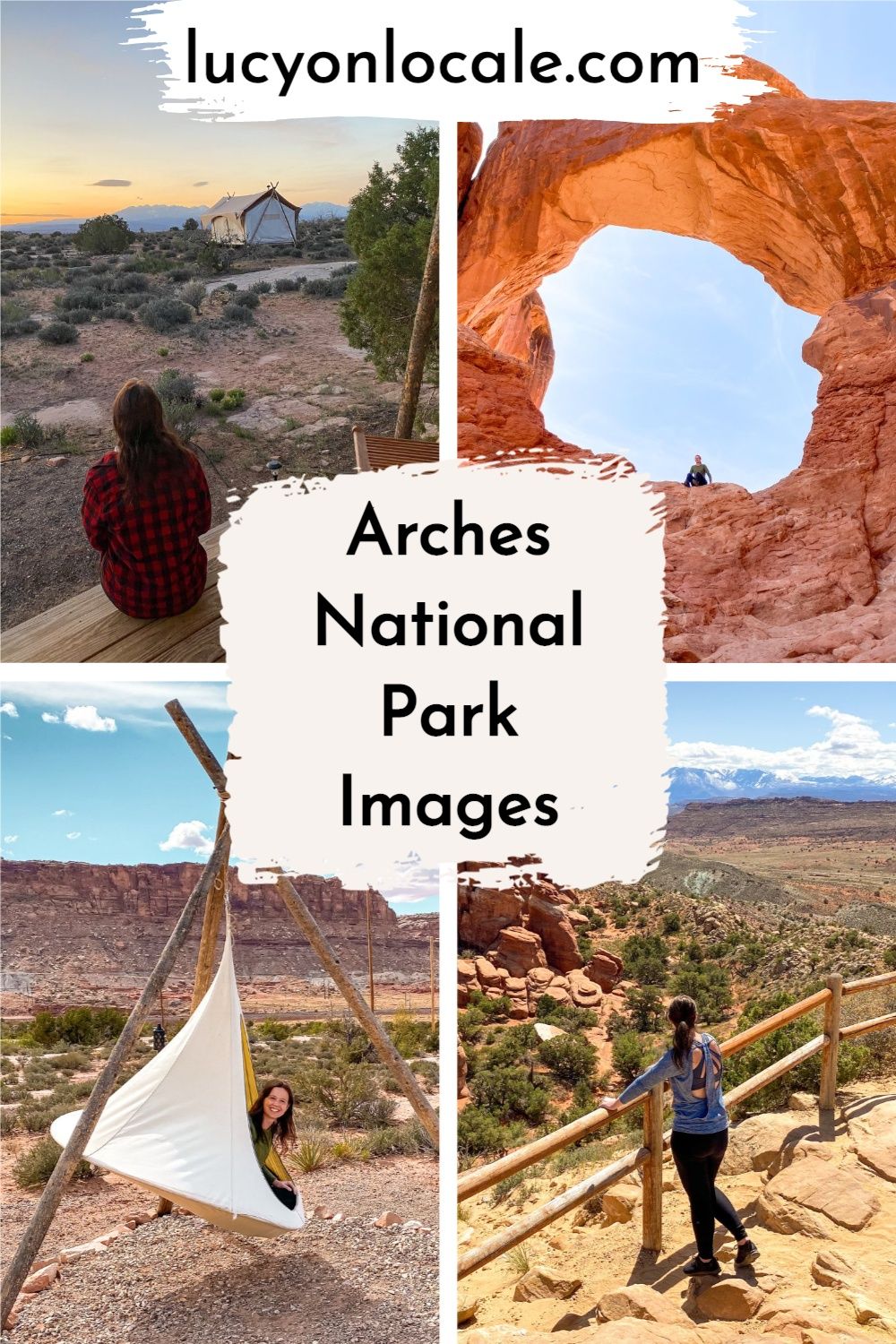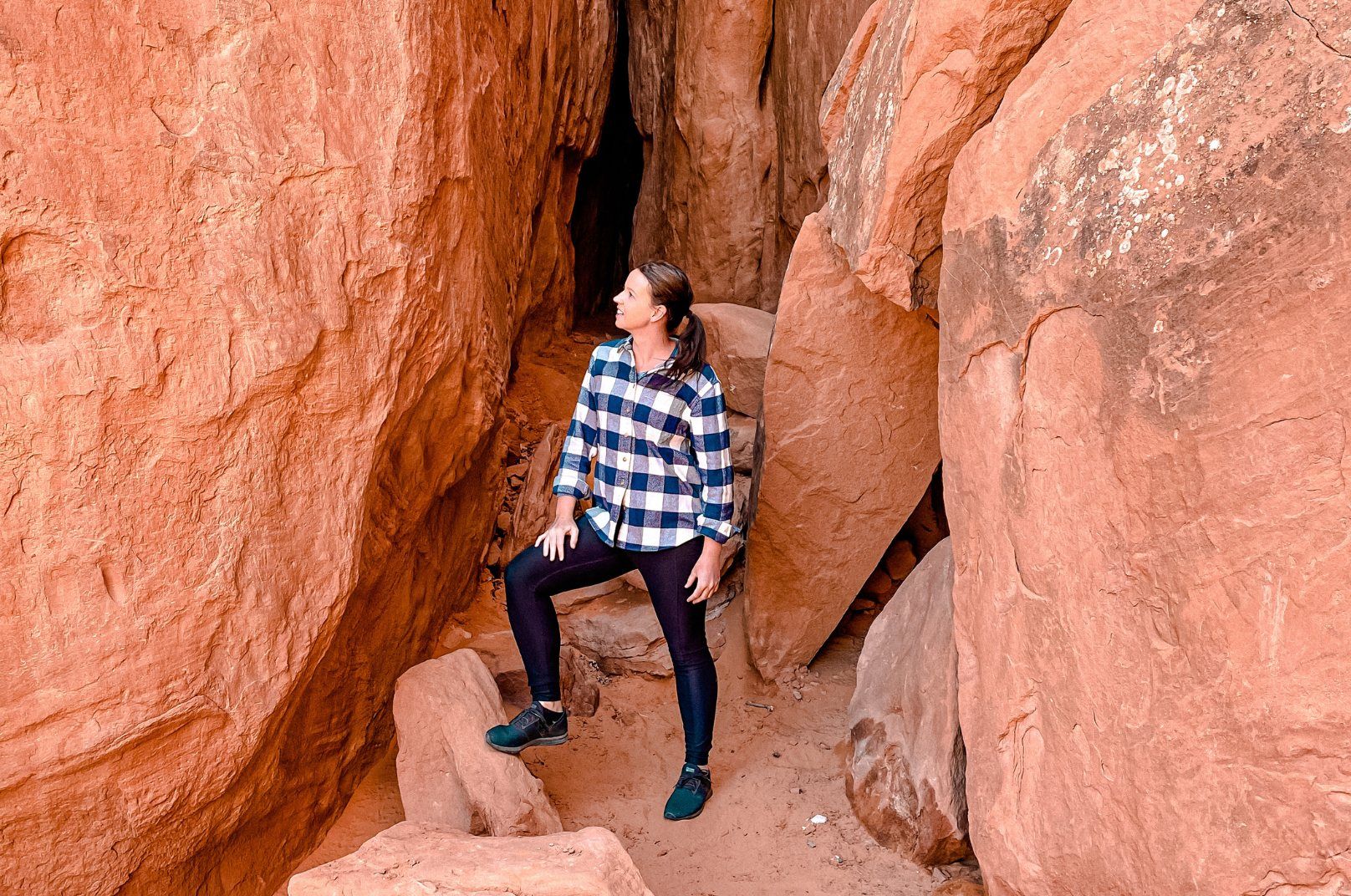
Arches is one of the most popular national parks in the U.S. because of its rock formations, off-roading, and hikes. I highly recommend visiting Arches as part of a Utah “Mighty Five” road trip. So here are some of my favorite Arches National Park images to inspire your travel plans!
The Ultimate Arches National Park Guide
There are many incredible hotels, vacation homes, and glamping sites near Arches for every budget and preference. If you’re bringing an RV or motorhome, stay at the Sun Outdoors Arches Gateway park or the Sun Outdoors Canyonlands Gateway park.
My top recommendations for Arches are to hike to Delicate Arch, visit the Fiery Furnace Viewpoint, hike to Sand Dune Arch, hike behind the Amphitheatre to see Skyline Arch, hike the Devils Garden Trail at least as far as Navajo Arch, Partition Arch, and Landscape Arch, explore Double Arch, hike the North Window/South Window/Turret Arch loop, and go on a guided 4×4 tour of the backcountry.
Here are my best Arches National Park images to inspire your next trip!

Read More
Bryce Canyon, Canyonlands, Zion, and Capitol Reef National Park Guides

Shop My National Park Essentials

Did my Arches National Park images inspire you to visit? Let us know in the comments!

Plan The Rest Of Your Trip

Recommended Tours in Arches

Frequently Asked Questions
How long does it take to do Arches National Park?
1-2 days.
If you’re only visiting Arches National Park for a day, arrive as early as possible. Start with the Delicate Arch hike (3-mile round trip, moderate, walking along rock ledges, plan on this taking at least three hours).
Next, stop at the Salt Valley and Fiery Furnace Viewpoints. Then hike out and back to Sand Dune Arch. If the Delicate Arch hike is too strenuous for you, walk to the Upper Delicate Arch Viewpoint (200 feet, easy, 15 minutes round trip), then visit the Salt Valley and Fiery Furnace Viewpoints, then hike out and back to Sand Dune Arch and Broken Arch (1.5 miles round trip, easy-moderate, about an hour).
Have lunch near the Devils Garden Campground, then hike behind the Amphitheatre to see Skyline Arch. Most people view Skyline Arch from the main road, but the view is better from the amphitheater side, and you can usually have the arch to yourself.
Spend the next three(ish) hours hiking as much of the Devils Garden Trail as possible. I recommend getting at least as far as Navajo Arch, Partition Arch, and Landscape Arch. Pace yourself, and don’t hike further out than you can walk back.
Next, drive back down the main park road and stop at Panorama Point and Garden of Eden. Then explore Double Arch and hike the North Window/South Window/Turret Arch loop.
On your way out of the park, end your day by seeing Balanced Rock, the Petrified Dunes Viewpoint, Courthouse Towers Viewpoint, and La Sal Mountains Viewpoint.
How many days do you need at Arches?
1-2 days.
If you’re only visiting Arches National Park for a day, arrive as early as possible. Start with the Delicate Arch hike (3-mile round trip, moderate, walking along rock ledges, plan on this taking at least three hours).
Next, stop at the Salt Valley and Fiery Furnace Viewpoints. Then hike out and back to Sand Dune Arch. If the Delicate Arch hike is too strenuous for you, walk to the Upper Delicate Arch Viewpoint (200 feet, easy, 15 minutes round trip), then visit the Salt Valley and Fiery Furnace Viewpoints, then hike out and back to Sand Dune Arch and Broken Arch (1.5 miles round trip, easy-moderate, about an hour).
Have lunch near the Devils Garden Campground, then hike behind the Amphitheatre to see Skyline Arch. Most people view Skyline Arch from the main road, but the view is better from the amphitheater side, and you can usually have the arch to yourself.
Spend the next three(ish) hours hiking as much of the Devils Garden Trail as possible. I recommend getting at least as far as Navajo Arch, Partition Arch, and Landscape Arch. Pace yourself, and don’t hike further out than you can walk back.
Next, drive back down the main park road and stop at Panorama Point and Garden of Eden. Then explore Double Arch and hike the North Window/South Window/Turret Arch loop.
On your way out of the park, end your day by seeing Balanced Rock, the Petrified Dunes Viewpoint, Courthouse Towers Viewpoint, and La Sal Mountains Viewpoint.
I highly recommend spending a second day in Arches National Park if possible. This will allow your first day to go at a more leisurely pace. If you have a second day, hike the Devils Garden Trail on your second morning instead of your first day.
Then in the afternoon, do a guided 4×4 tour of the backcountry. More than 1.5 million people visit Arches National Park every year, but only about 15,000 venture into the backcountry. So a 4×4 ride is a way to escape the crowds and explore a part of the park that few people ever visit.
What is the best month to visit Arches National Park?
Arches National Park is open 24 hours a day, every day of the year. But in the winter, some facilities are closed or operate on reduced hours.
June to August is the peak travel season, so be prepared for limited parking and crowds. You can avoid some of the other visitors by going on weekdays and arriving early in the morning. Daytime temperatures can get up to 110 degrees, so plan on hiking in the mornings and evenings. Book your accommodation and time entry as far in advance as possible, and rangers lead free guided evening walks in the summer
The rainy season is in late summer when frequent afternoon thunderstorms can bring heavy rain, flash flooding, or lightning. So you’ll need to monitor the weather continuously and don’t start a hike if storm warnings are in effect.
September and October are cooler months, with daytime temperatures in the mid-80s and 70s and lows in the 50s and 40s at night. There will be fewer tourists than in the summer, but you should still be prepared for crowds, especially on the weekends.
Winter is the off-season when you can have the park practically to yourself. November to March has daytime temperatures in the 30s – 50s, so it will be cold, but you won’t have to compete for parking or spots at the famous viewpoints. No ranger programs are offered in winter, though, and some roads and trails may close because of snow or ice.
April and May are beautiful months to visit Arches because the wildflowers will be blooming. Daytime temperatures will be in the low 80s and 70s, and rangers offer free, daily guided 1-mile walks along easy trails. Spring is only slightly less popular than the summer months, so there will be crowds and lines to get into the park.
What is the most popular arch in Arches National Park?
Delicate Arch is the most popular and well-known arch in Arches National Park.
Start your day with the Delicate Arch hike (3-mile round trip, moderate, walking along rock ledges, plan on this taking at least three hours).
Next, stop at the Salt Valley and Fiery Furnace Viewpoints. Then hike out and back to Sand Dune Arch. If the Delicate Arch hike is too strenuous for you, walk to the Upper Delicate Arch Viewpoint (200 feet, easy, 15 minutes round trip), then visit the Salt Valley and Fiery Furnace Viewpoints, then hike out and back to Sand Dune Arch and Broken Arch (1.5 miles round trip, easy-moderate, about an hour).
How long does it take to get through Arches National Park?
The scenic drive in Arches is about 22 miles one way. Plan on this drive taking around half a day to drive, including stopping at the viewpoints and hiking some of the short trails. If you want to do one or more of the longer hikes, plan on this drive taking most of a day.
How long is the arches hike?
The hike to Delicate Arch (the most popular, famous, and iconic arch in Arches National Park) is 3.2 miles round-trip. This is a moderate hike that does require walking along exposed rock ledges.
Is the hike to Delicate Arch scary?
I did not find the hike to Delicate Arch scary. This trail does require walking along exposed rock ledges, but this moderate hike is a great choice as long as you’re not terrified of heights.
How far apart are Zion and Arches National Park?
Arches and Zion are about 355 miles (five and half hours) from each other. The best way to visit both of these parks is on a Utah “Mighty Five” road trip that also includes Bryce Canyon, Capitol Reef, and Canyonlands.
Day 1: Zion. Drive the scenic Kolob Canyons Road and hike the Timber Creek Overlook Trail
Day 2: Zion. Rent e-bikes and bike the Pa’rus Trail and the Zion Canyon Scenic Drive. Hike Angel’s Landing.
Day 3: Zion. Drive the scenic Zion-Mount Carmel Highway, leave the park, see the bison herd usually visible on the right a few miles down the roadt, go ATVing at nearby Coral Pink Sand Dunes State Park, have lunch at Cordwood or Co-op Cafe before heading back into Zion, hike the Canyon Overlook Trail ,and stop at any or all of the pull-offs along the scenic drive.
Day 4: Zion. Hike The Narrows. If you don’t want to hike The Narrows, hike the Watchman Trail in the morning, have a picnic lunch or eat in Springdale, then in the afternoon, hike the Lower and Middle Emerald Pools Loop, and if you’re up for it, continue to the Upper Emerald Pool.
Day 5: Bryce Canyon. Check out of your Zion accommodation early this morning and head to Bryce Canyon. Start with the Queen’s/Navajo Combination Loop. Next, take a lunch break. Then do the scenic drive to Rainbow Point, making sure you stop at all the named viewpoints along this route. Then check into your accommodation. If you’re up for a late night, see if there’s a “Dark Ranger” stargazing program when you’re here.
Day 6: Bryce Canyon.Check out of your accommodation, and start your day with the Tower Bridge hike. Eat lunch, then if you’re here from April to October, do an afternoon guided horseback ride into the Bryce Amphitheater along a dedicated horse trail and the Peek-a-boo Loop Trail. If you’re here from November to March, do the Mossy Cave hike (easy, 0.8 miles round trip to a grotto filled with icicles in the Winter). Then drive to your Capitol Reef National Park accommodation.
Day 7: Capitol Reef. Start your day with the scenic drive on Highway 24 until you reach the visitor center. Then drive on the scenic road through the park. When you get back to the Fruita Historic District, have a picnic lunch by the Fremont River, explore the historic buildings, and check out the fruit orchards. Then head back to Highway 24, going west until you get to the Hickman Bridge/Rim Overlook trailhead. If you want a moderate hike, opt for Hickman Bridge. If you’re up for a strenuous hike for incredible views of most of the park, choose the Rim Overlook trail. Finish your day by driving the rest of scenic Highway 24 to the western side of the park, then head back to your accommodation.
Day 8: Check out of your accommodation and explore the Cathedral Valley northern part of Capitol Reef. The Cathedral Valley section of the park has an unpaved loop road that will let you experience some of the most breathtaking and unique landscapes you’ll ever see. Then head to Goblin Valley State Park – explore The Goblin Valleys for about an hour – on your way to Moab.
Day 9: Head to Arches National Park, do the Delicate Arch hike, stop at the Salt Valley and Fiery Furnace Viewpoints, then hike out and back to Sand Dune Arch. Have lunch near the Devils Garden Campground, then hike behind the Amphitheatre to see Skyline Arch. Next, drive back down the main park road and stop at Panorama Point and Garden of Eden. Then explore Double Arch and hike the North Window/South Window/Turret Arch loop.
Day 10: Spend the morning back in Arches hiking as much of the Devils Garden Trail as possible. I recommend getting at least as far as Navajo Arch, Partition Arch, and Landscape Arch. Then in the afternoon, do a guided 4×4 tour of the backcountry.
Day 11: Hire a 4×4 vehicle and driver to explore the Island In The Sky district of Canyonlands National Park. Pull off at both of the Shafer Canyon Overlooks, hike the Mesa Arch trail, enjoy the park’s scenic drive, then spend the rest of the day driving through the Canyonlands backcountry.
Day 12: Head home or to your next destination!

This post of Arches National Park images is not a sponsored post, and, as always, the thoughts and opinions expressed in this post of Arches National Park images are entirely my own. Some of these links are affiliate links, and, at no cost to you, I may earn a small commission from this post of Arches National Park images.
 Destinations
Destinations Packing
Packing Travel Tips
Travel Tips
 Photography
Photography Points & Miles
Points & Miles Credit Cards
Credit Cards